1lumen selects and reviews products personally. We may earn affiliate commissions through our links, which help support our testing.
Astrolux MF01X review
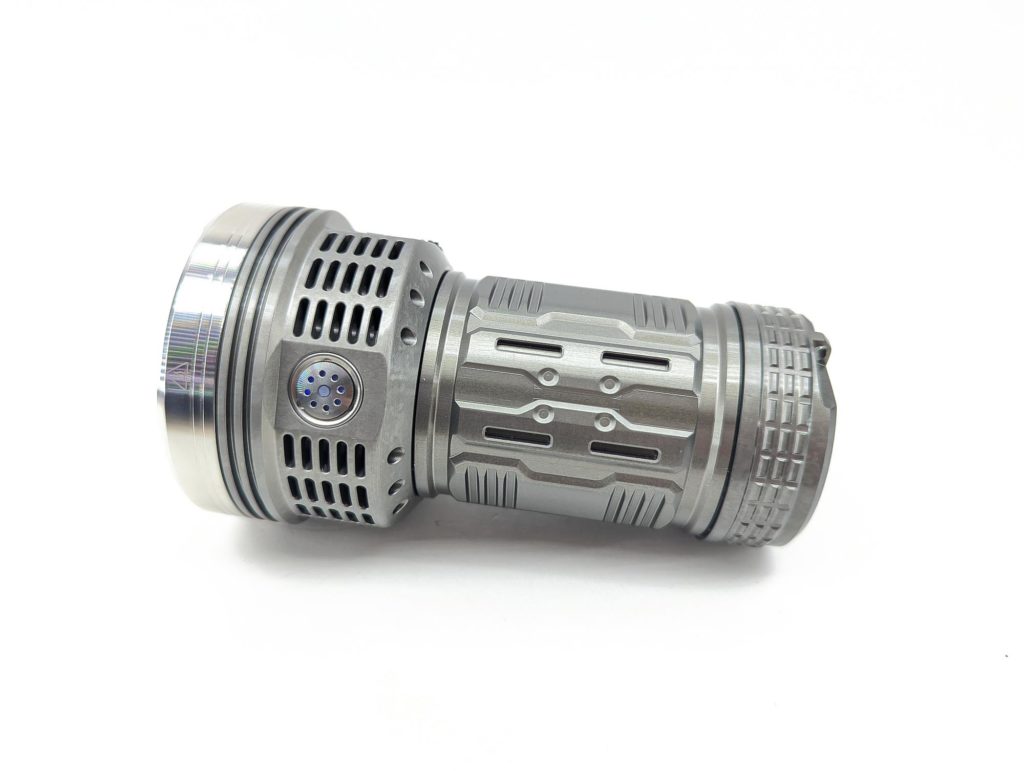
Astrolux MF01X specifications
| Brand/model | Astrolux MF01X |
|---|---|
| LED | 18*SFQ43 |
| Max. Lumens | 21,000 Lumens |
| Max. Beam intensity / distance | 190,000 cd |
| Battery config. | 3*21700 |
| Onboard charging | USB-C |
| Modes | Many (Anduril) |
| Blinkies | Many (Anduril) |
| Reflector | TIR optics |
| Waterproof | IPX7 |
| Review date | April 2022 |
Introduction:
Astrolux is Banggood’s “house” brand of flashlights. They offer a very wide assortment of lights from the very tiny keychain sizes up to some really beastly flashlights. Today’s review unit, the MF01X, is a prime example of the lumen-monster end of their range of lights. It’s the follow-up of the Astrolux MF01S. These guys are soda-can style lights (fairly short, but stout) that use multiple batteries and a whopping 18 LEDs. The previous generation boasted 15,000 lumens. Think that sounds ridiculous? For sure, that’s an insane amount of light. But the MF01X is here to smash that spec with a claimed 21,000 lumens!
Package quality.
The MF01X arrived in the familiar Astrolux-emblazoned cardboard box with some stickers on the side to reveal the particulars of the contents. The inside was lined with custom-cut white foam. Overall, the packaging is a pretty utilitarian affair. While I appreciate when manufacturers pay attention to those details, I’m here for the light – not the package. Inside the box was:
- Astrolux MF01X
- Spare o-rings
- Lanyard
- Tripod adapter
- Manual
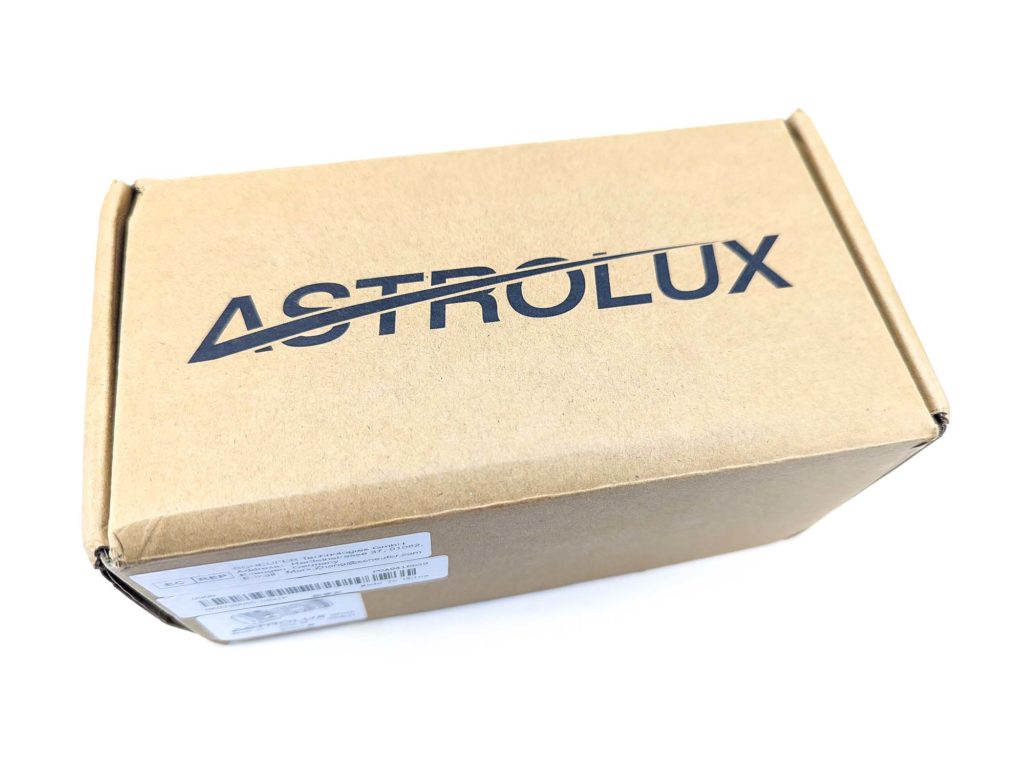
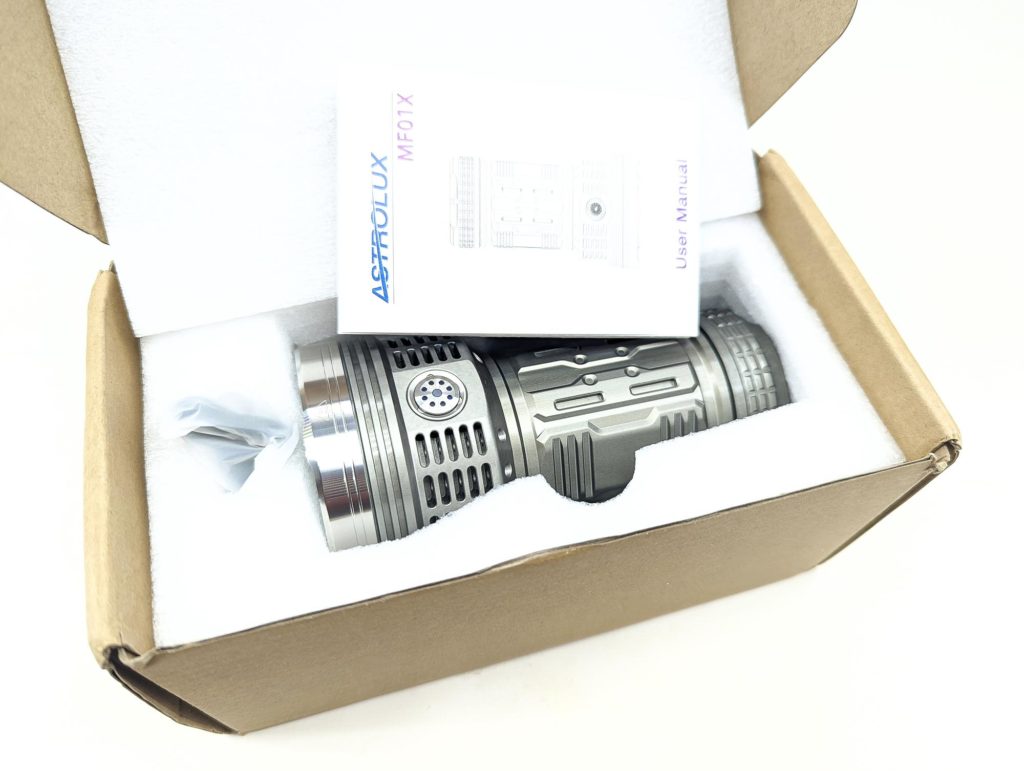
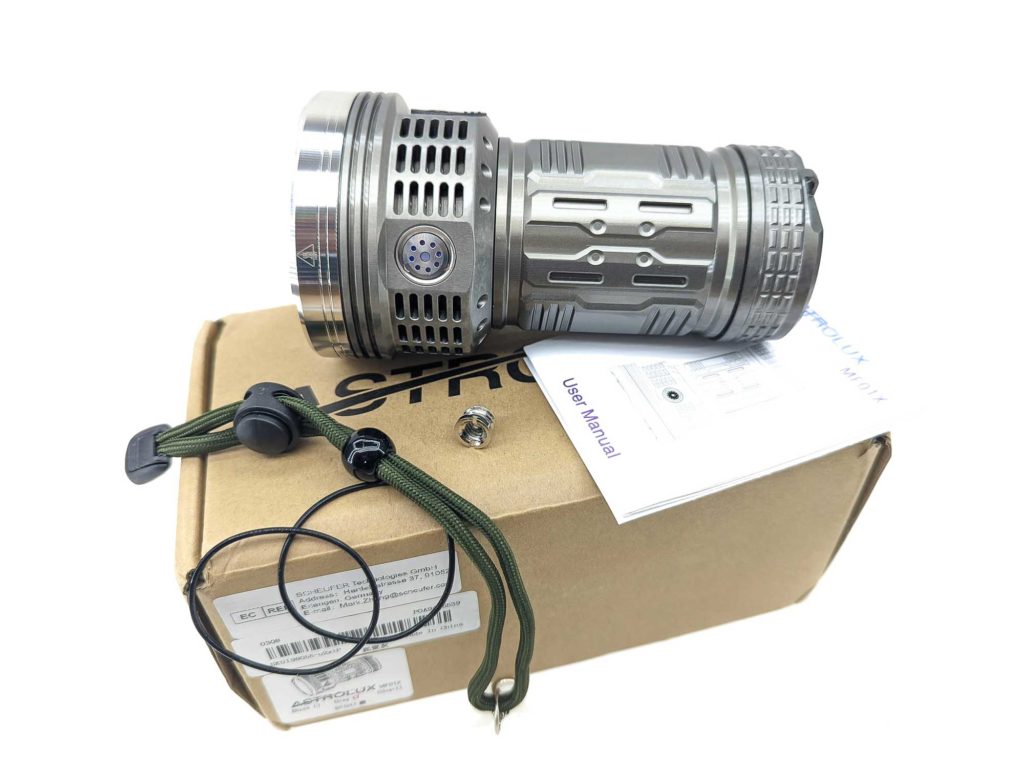
Flashlight in use
Like any true soda-can style light, the MF01X is girthy. That triple-21700 battery tube is a handful. It’s pretty easy to grasp and sits comfortably in the hand, assuming you have big enough hands. While there is a lot of machining on the MF01X, nearly everything (aside from the lanyard hole) is chamfered, so it is fairly smooth. If you’re worried about the MF01X being too big to get a good grip on, Astrolux does offer a handle for the light. I don’t have that available to describe but it does look like a nice accessory if you think it’s something you might use.
The included lanyard is pretty nice and is an upgrade from the typically included ones. It includes some adjustment beads, and it terminates with a lobster-claw style clip for attaching to the flashlight. There’s a screw attachment point on the side of the head with generously sized threads, and the MF01X comes with a tripod adapter to thread into that hole. The tail end of the light is relatively flat and tailstands very stably.
There’s a single switch on the Astrolux MF01X: an e-switch located on the side of the head. It echoes the rest of the light’s overall techno-futuristic appeal, being covered with metal (stainless steel?). The cover has several holes in it that let the aux LEDs shine through. There’s just one problem – this switch is a pain to use.
And considering that’s how you do anything with this flashlight, that’s a tough pill to swallow. I find it hard to describe a switch’s “feel” but you might say the travel is very shallow and activation is a bit unpredictable. I found it incredibly infuriating to do anything more than a single press with the switch as it arrived from the factory. I tried changing the aux LED settings (a 7C from off) and nearly gave up after several minutes of failed attempts. While the metal cover looks cool and all, it made me hate using this light. That is, until I decided to unscrew the switch’s retaining ring and remove that metal cover. Thankfully there’s a silicone switch boot underneath. I put the retaining ring back and… it’s like a whole new light. I’m not sure how this design made it past QC / testing, but it needs some work.
As far as use cases go, I’d say the MF01X really shines in impressing your friends. Or perhaps just about any situation where you’d haul around a beast of a light and need more lumens than several car headlights put together. Do you need to light up an entire sports field for a few minutes? The MF01X is the light for the job.
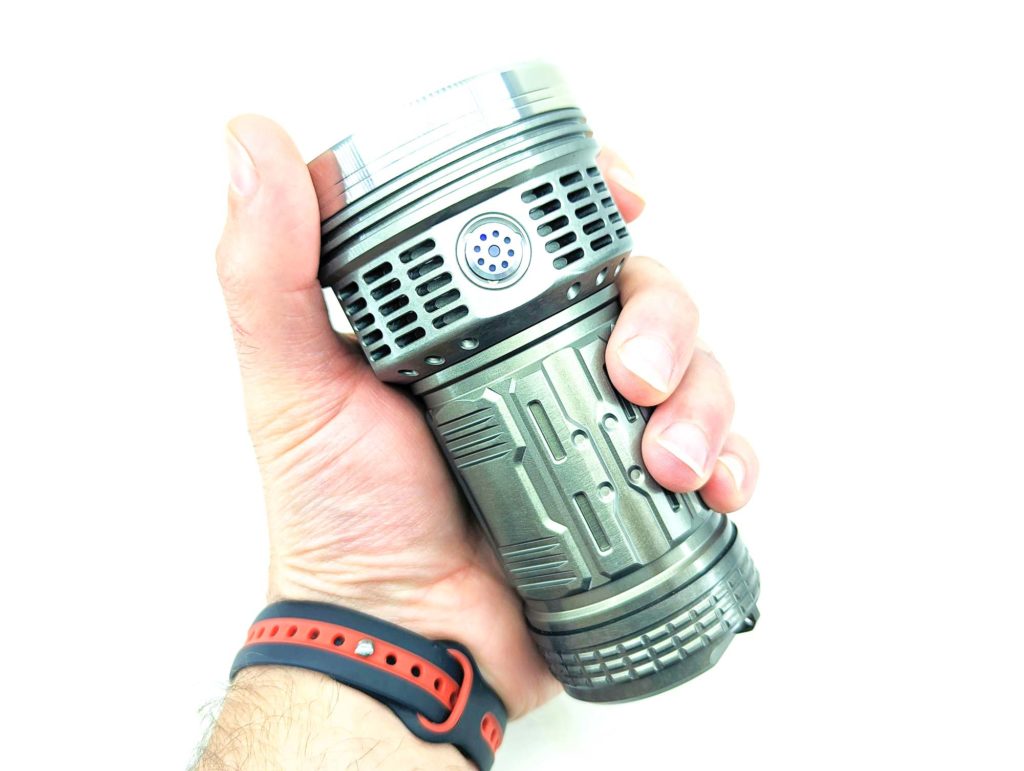
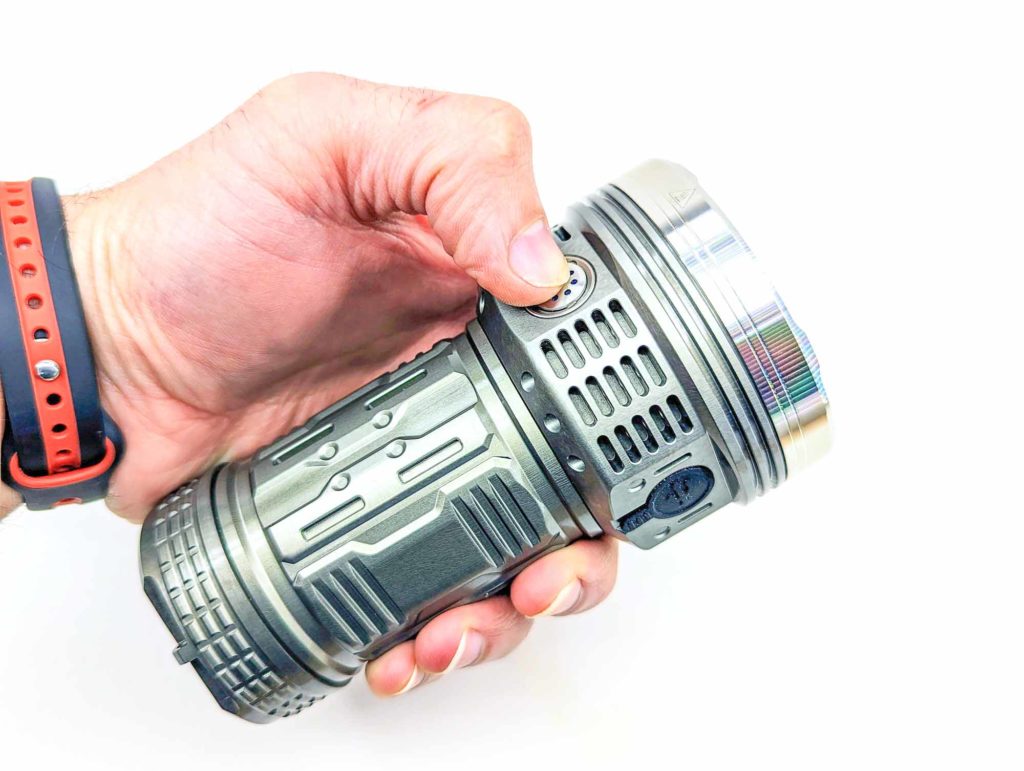
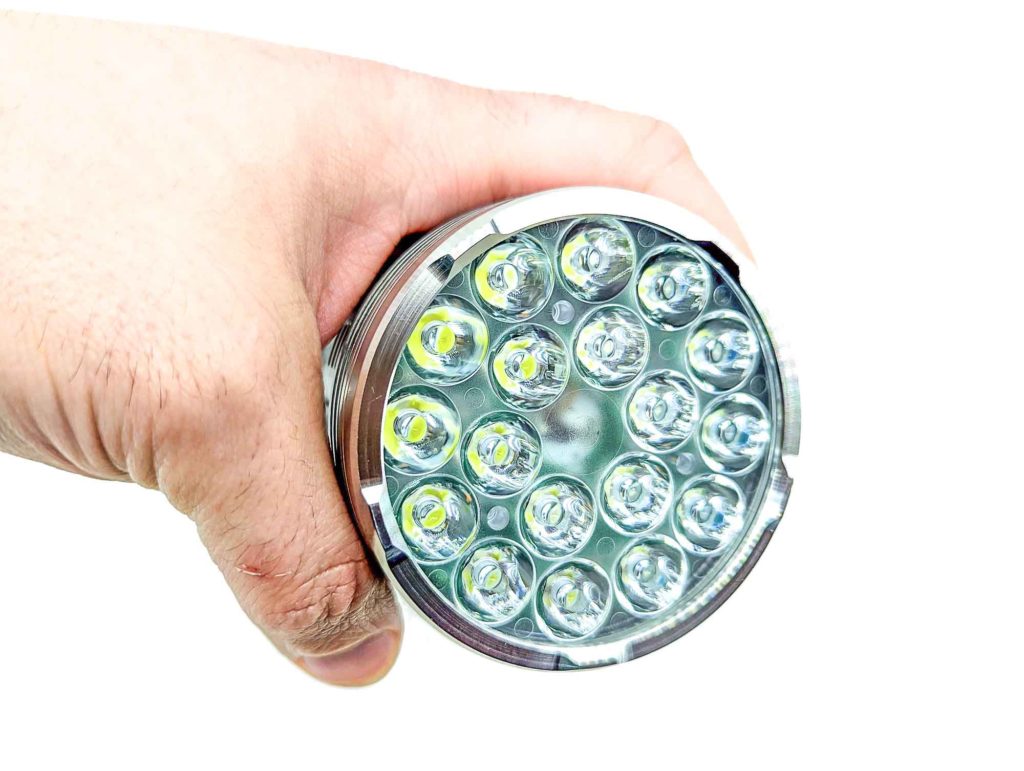
Build Quality, and Warranty
The Astrolux MF01X is made largely of aluminum, which Astrolux claims is coated in HA III anodizing. It comes in three colors: black, grey, and silver. This unit happens to be grey, which I think is a pretty handsome look. I don’t really see any nicks or bare spots in the anodizing, but it does seem a little thin on the head and tailcap. It’s almost like you can see a hint of the bare aluminum under the coating. The body tube seems well coated.
The threads look like they’re well-cut. But they seemed a bit gritty at first, so I cleaned them off with some isopropyl alcohol and lubed them back up with some silicone grease. To be honest, it didn’t seem to help. If anything, the threads seemed to get even grittier. And removing the tailcap became almost impossible at times. I had to get some grippy pads and really torque on the tailcap for a couple of minutes to get it to come off on several occasions. I even tried removing the o-ring to see if that was the problem, but that didn’t fix the situation either. Thankfully, if this is a light you use much, you could probably just leave the batteries in and charge it up when you need to use the USB-C port.
I feel like the manufacturer paid attention to decrease resistance. The tailcap has heavy dual springs. The positive end of the battery carrier has solid brass buttons. And the driver spring is relatively short and has a bypass wire soldered to it.
Warranty: neither the product manual nor Banggood’s website mentions warranty terms. You’d need to reach out to Banggood Customer Service if something comes up.
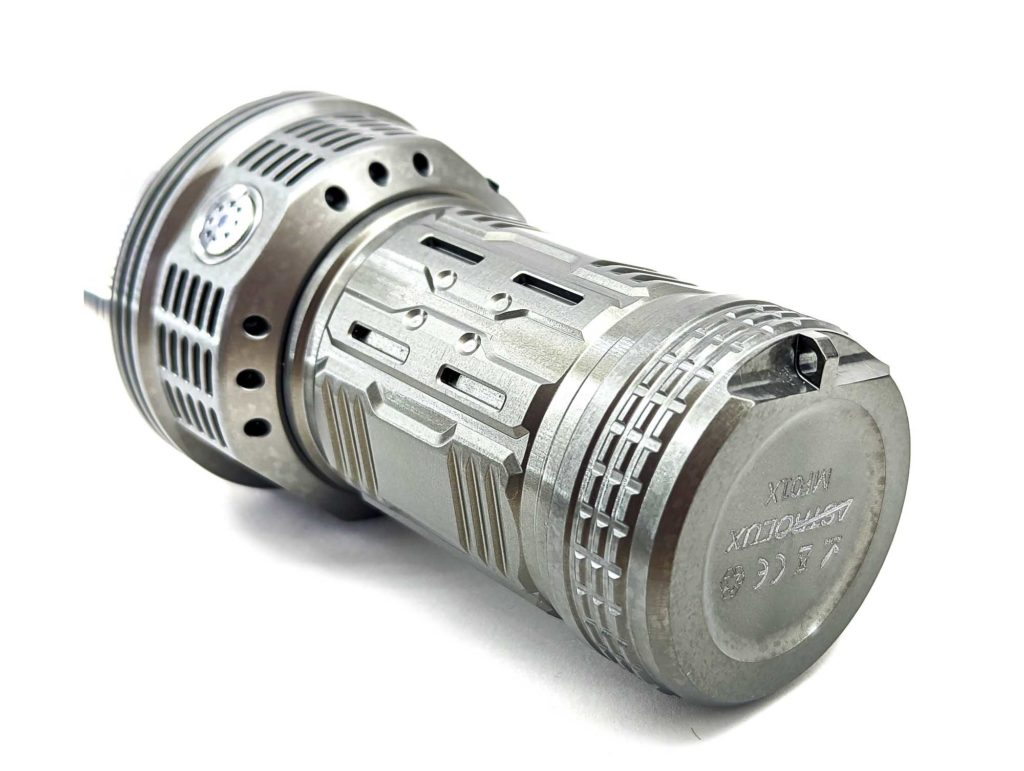
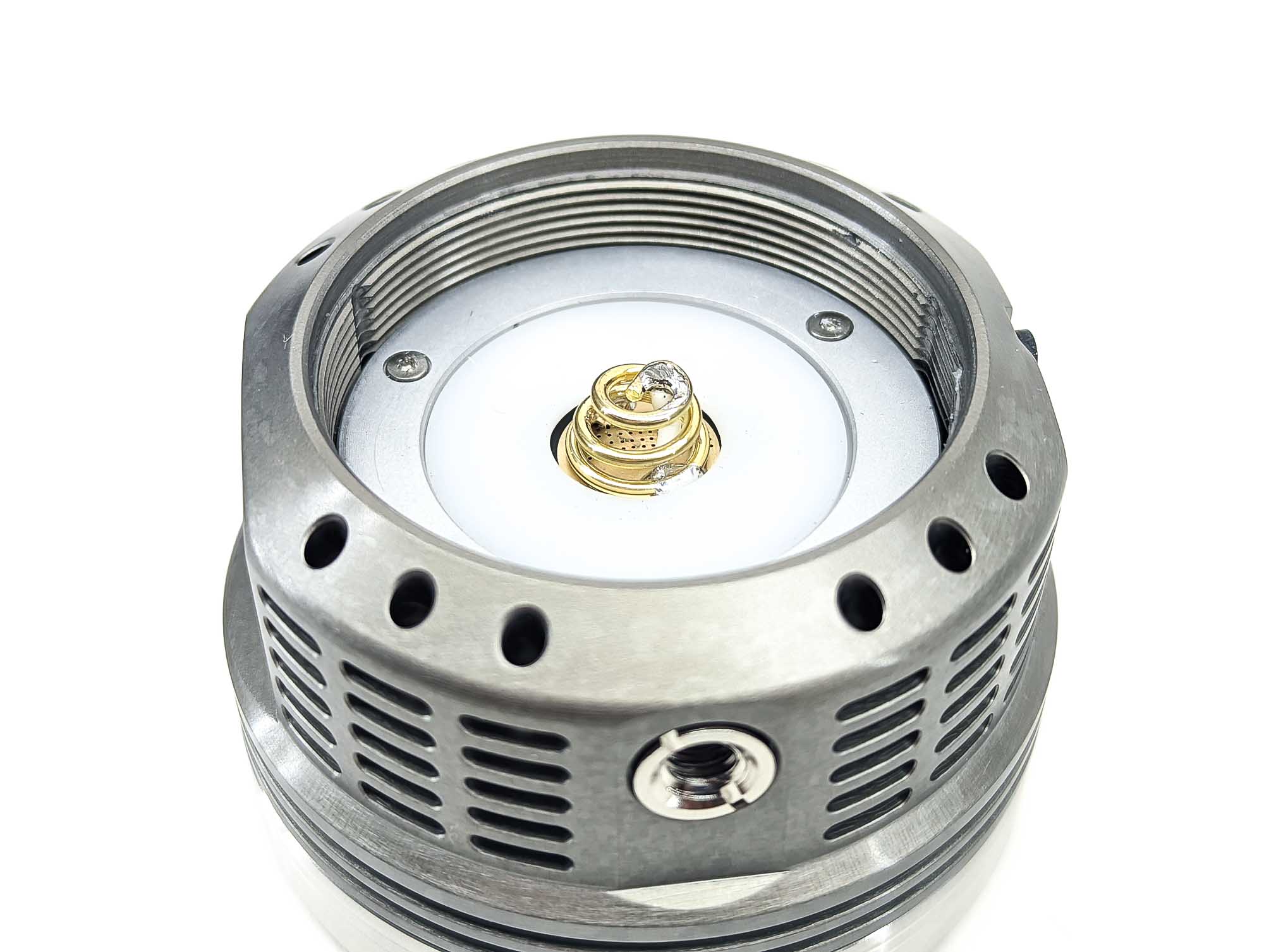
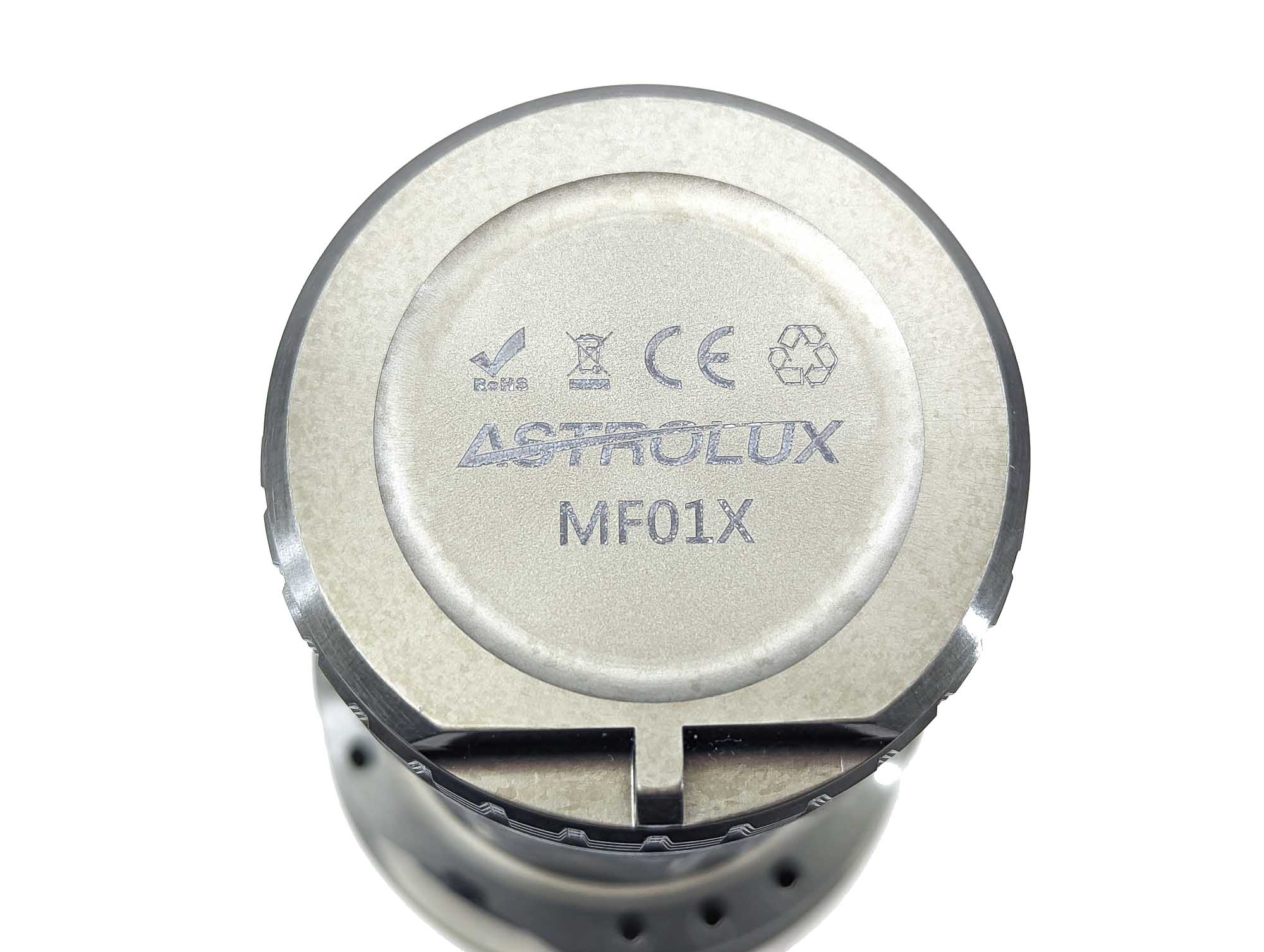
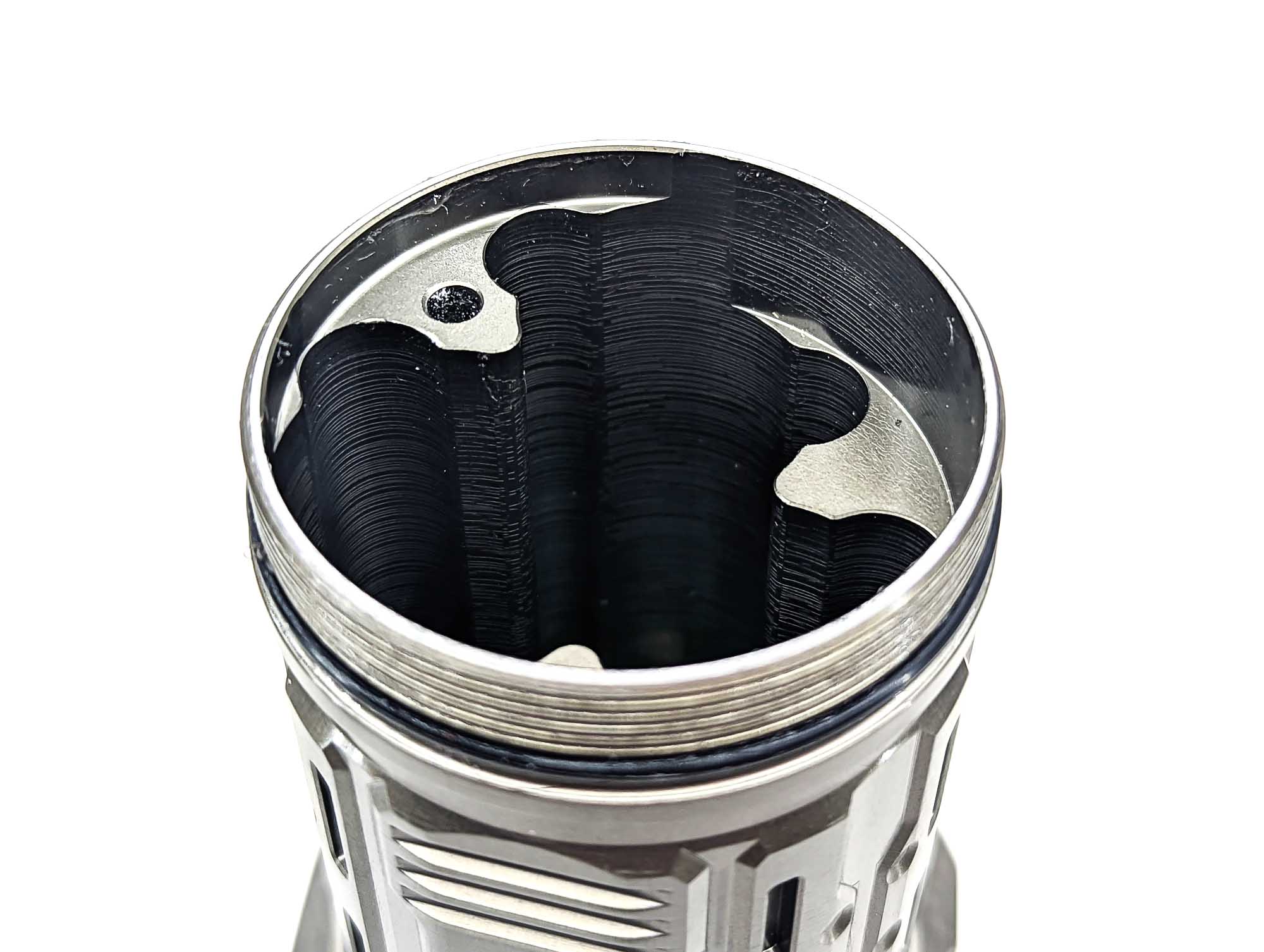
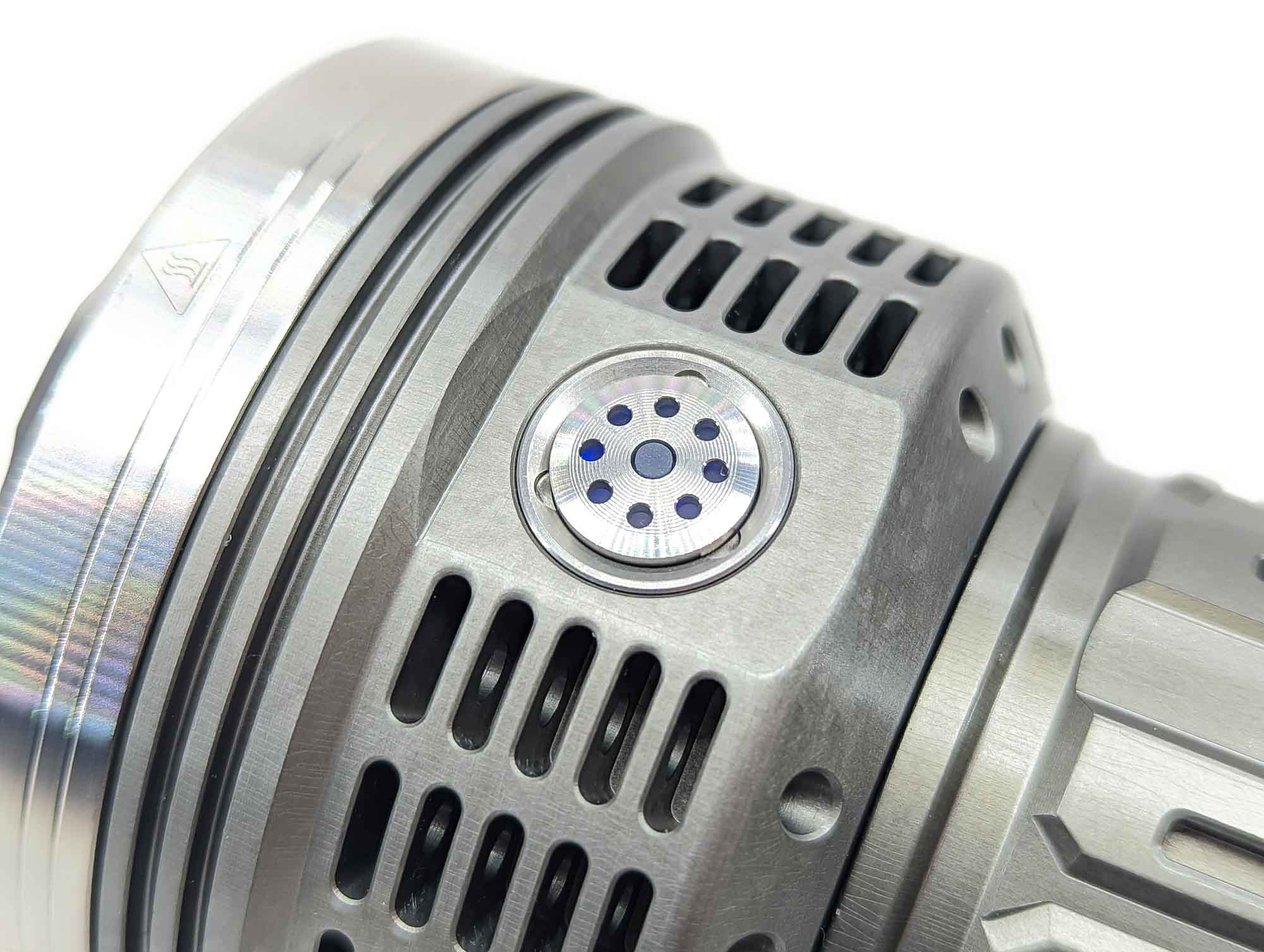
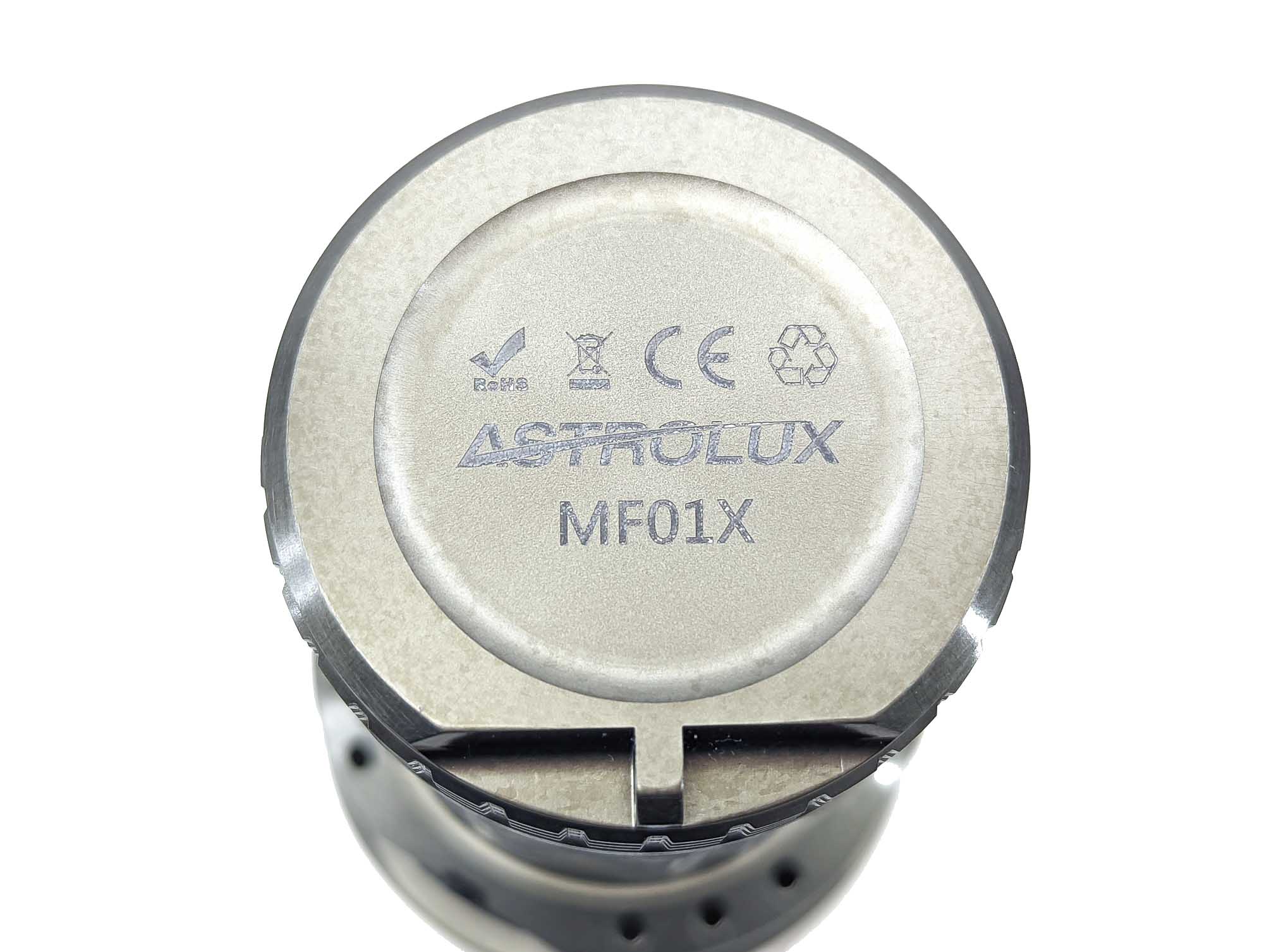
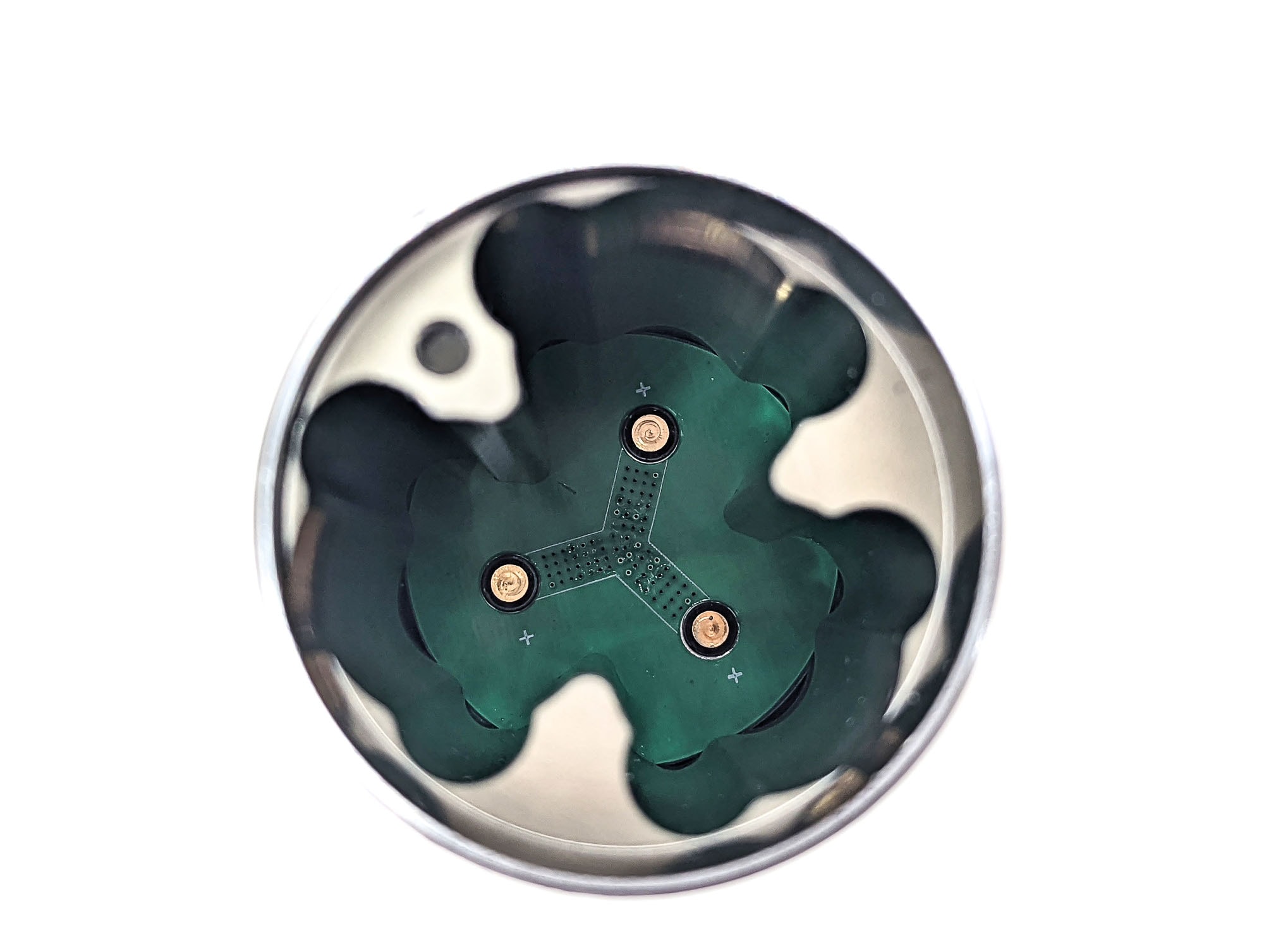
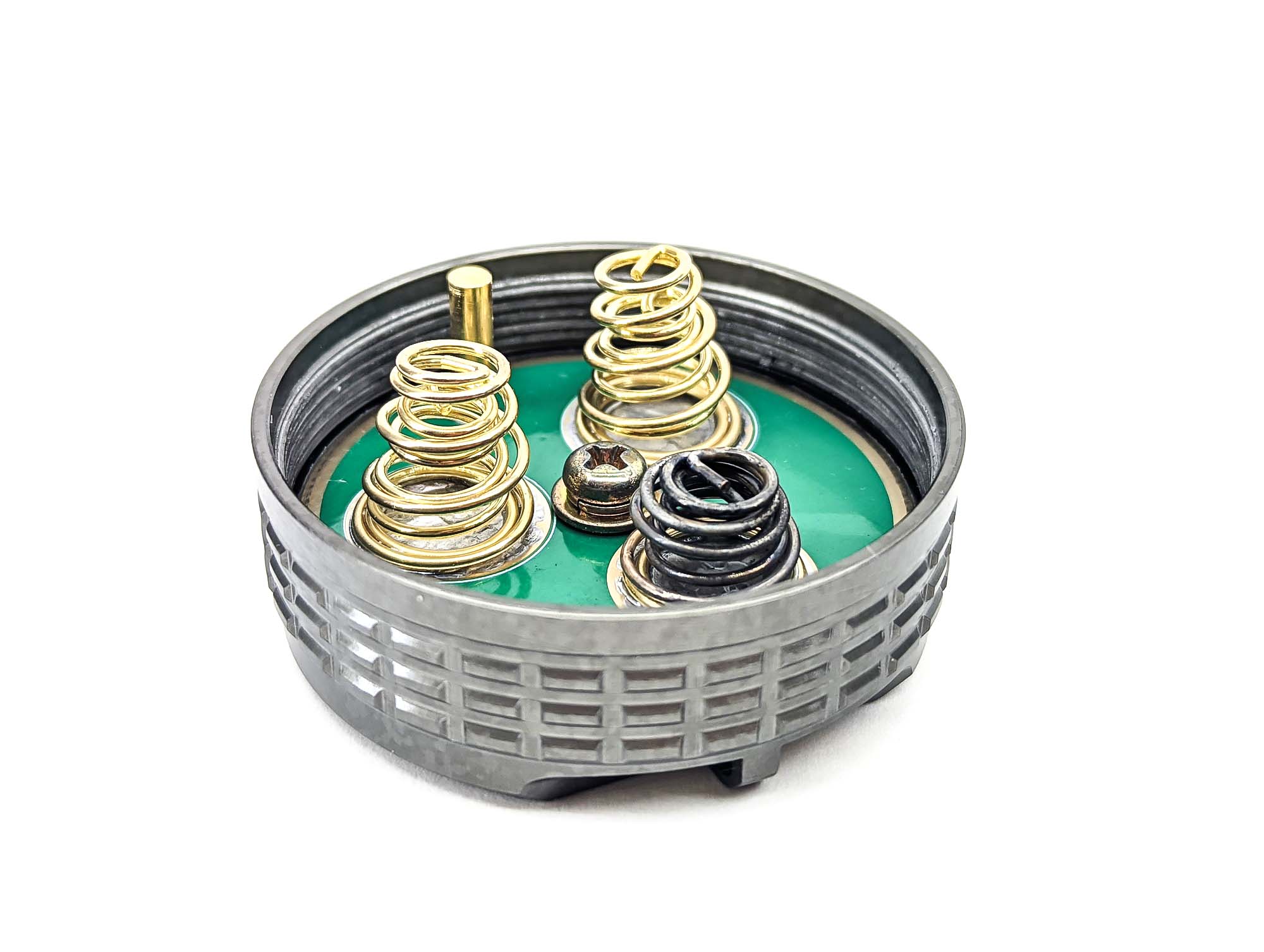
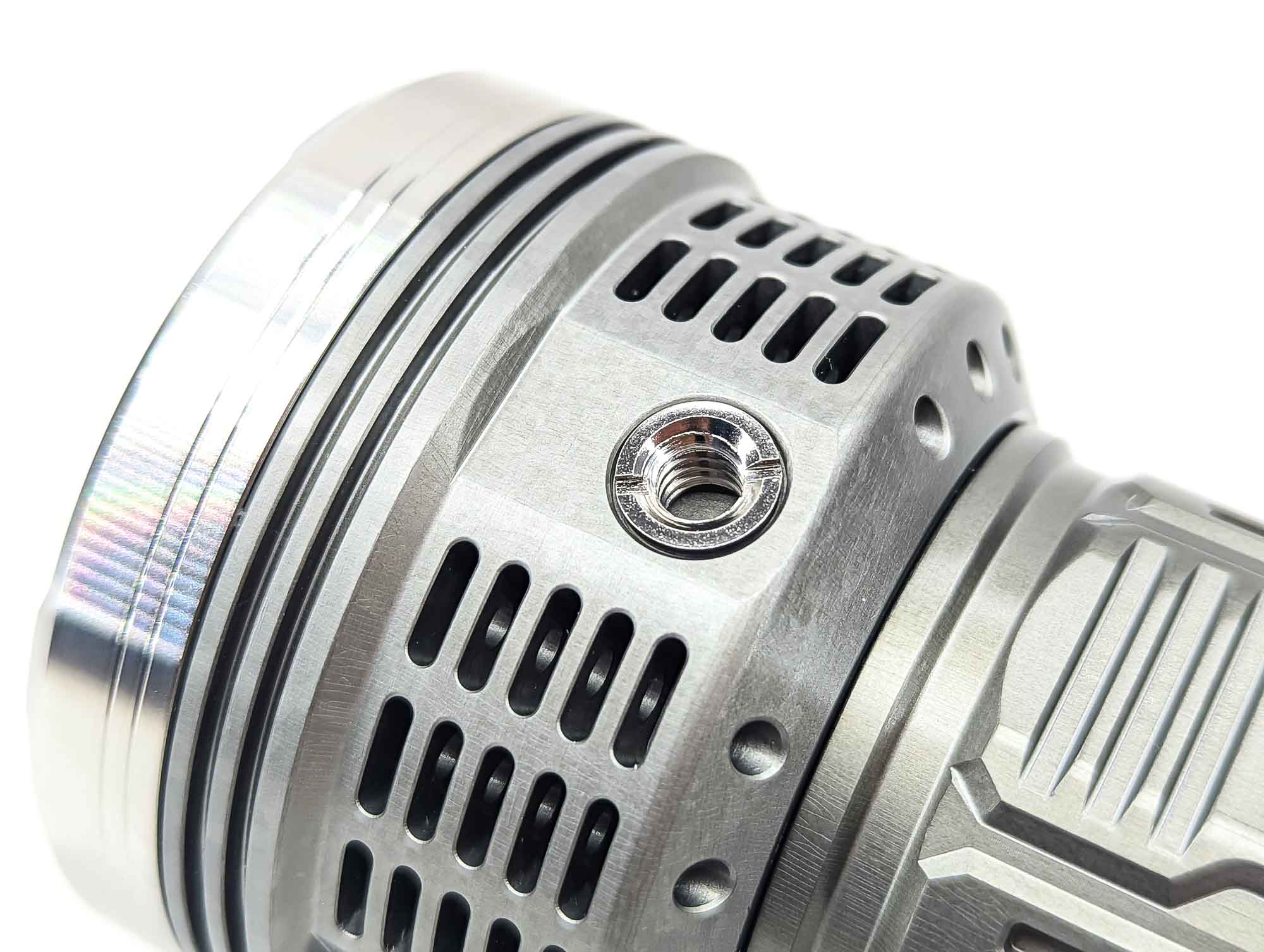
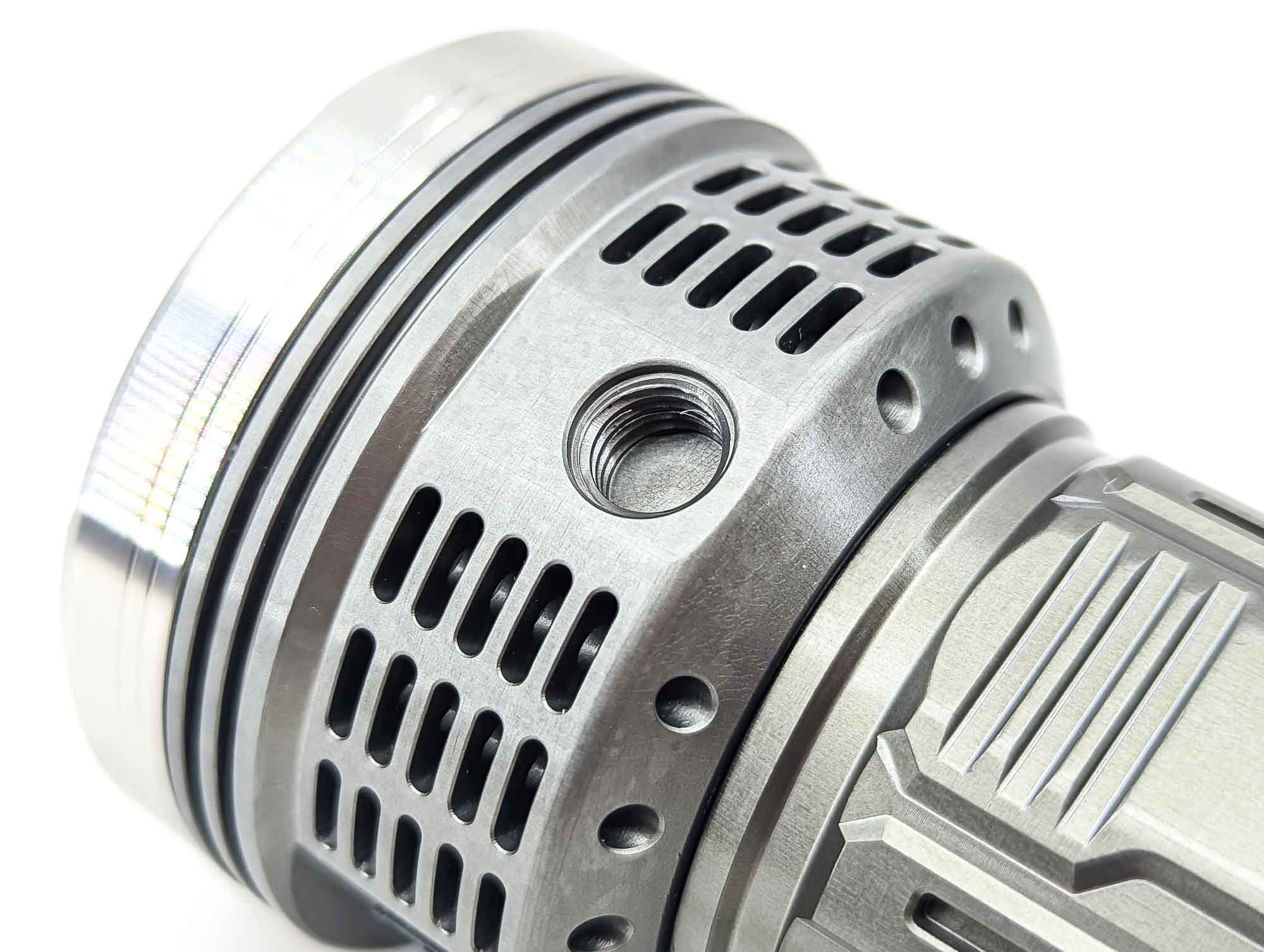
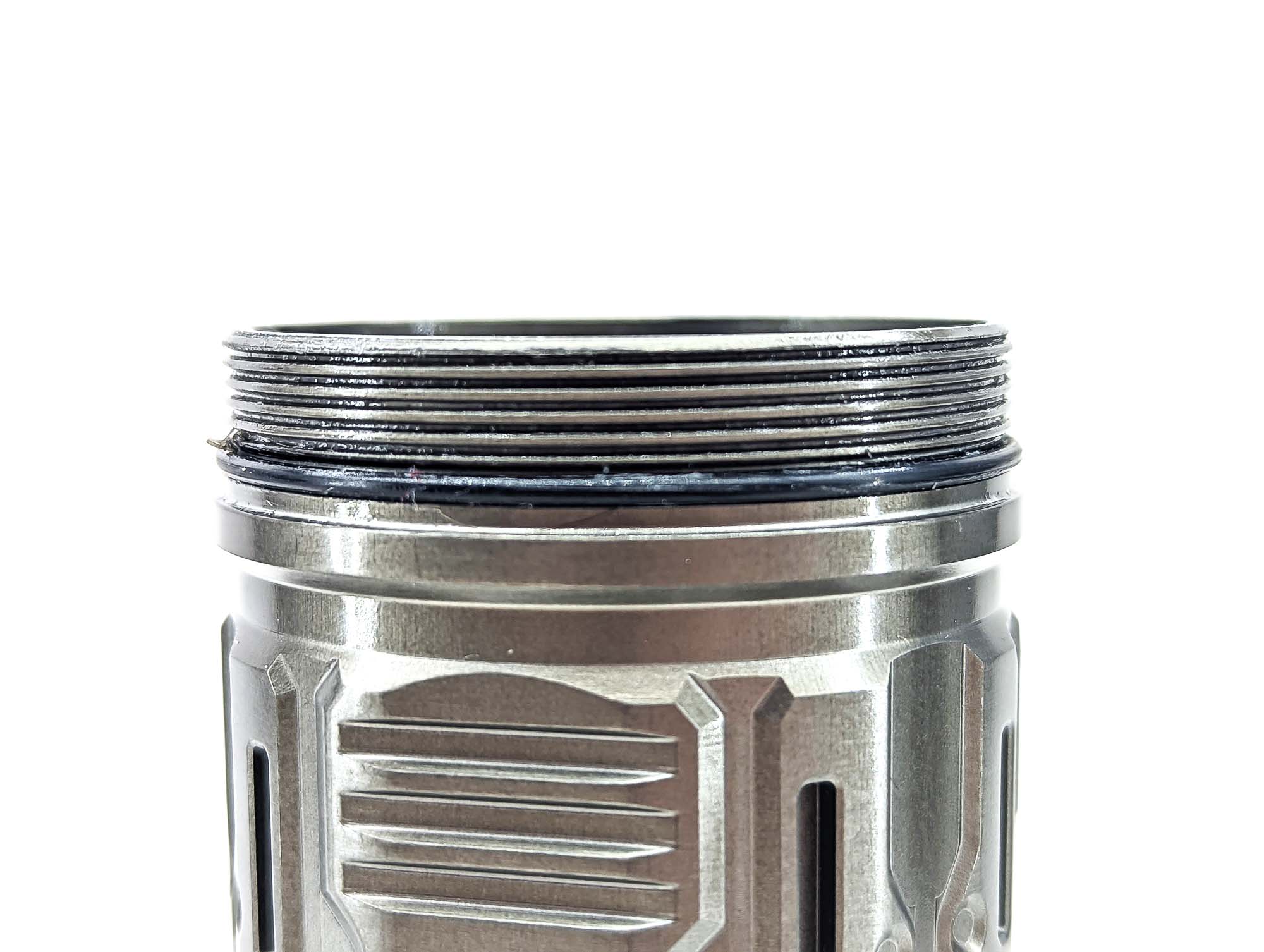
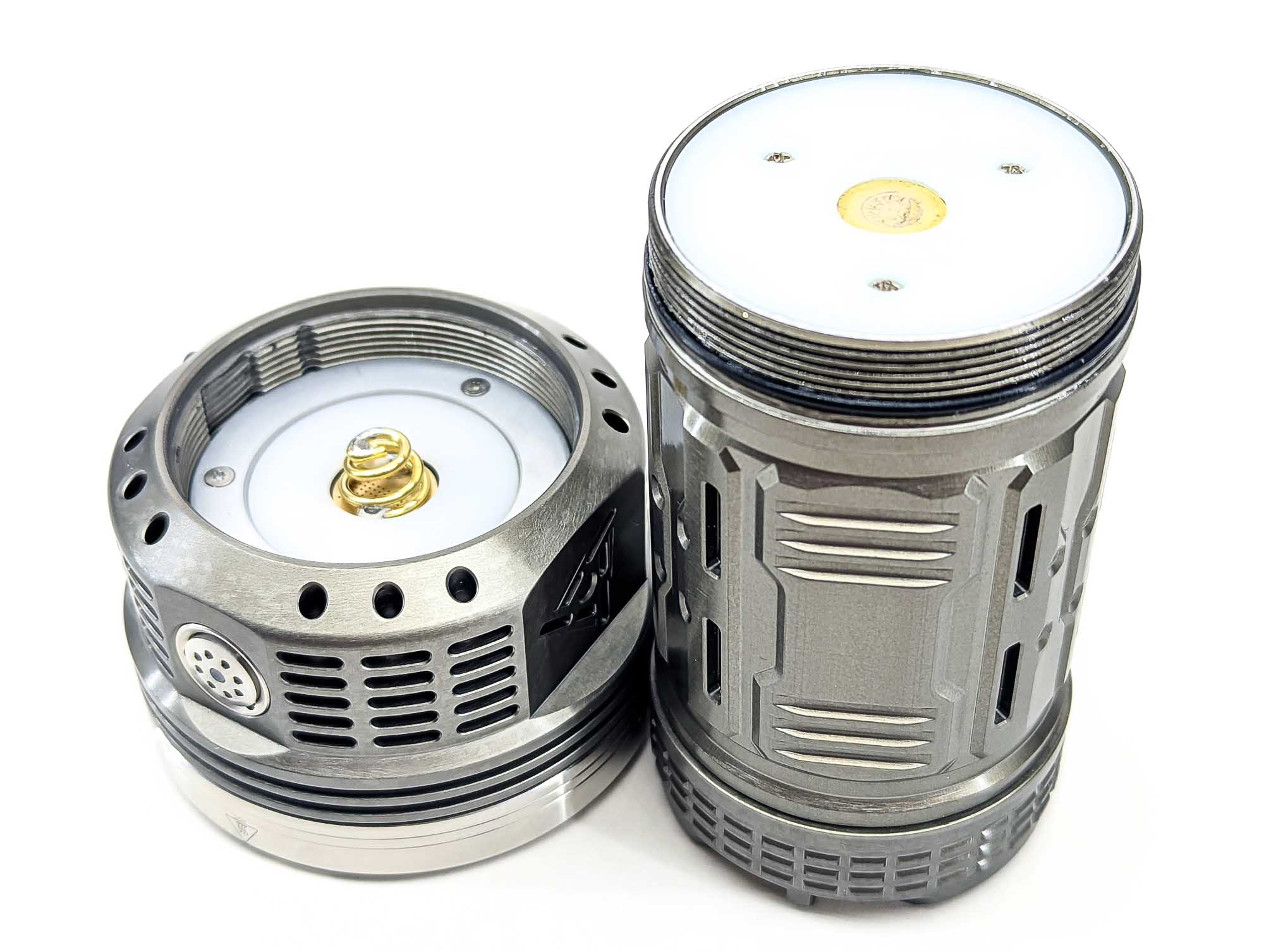
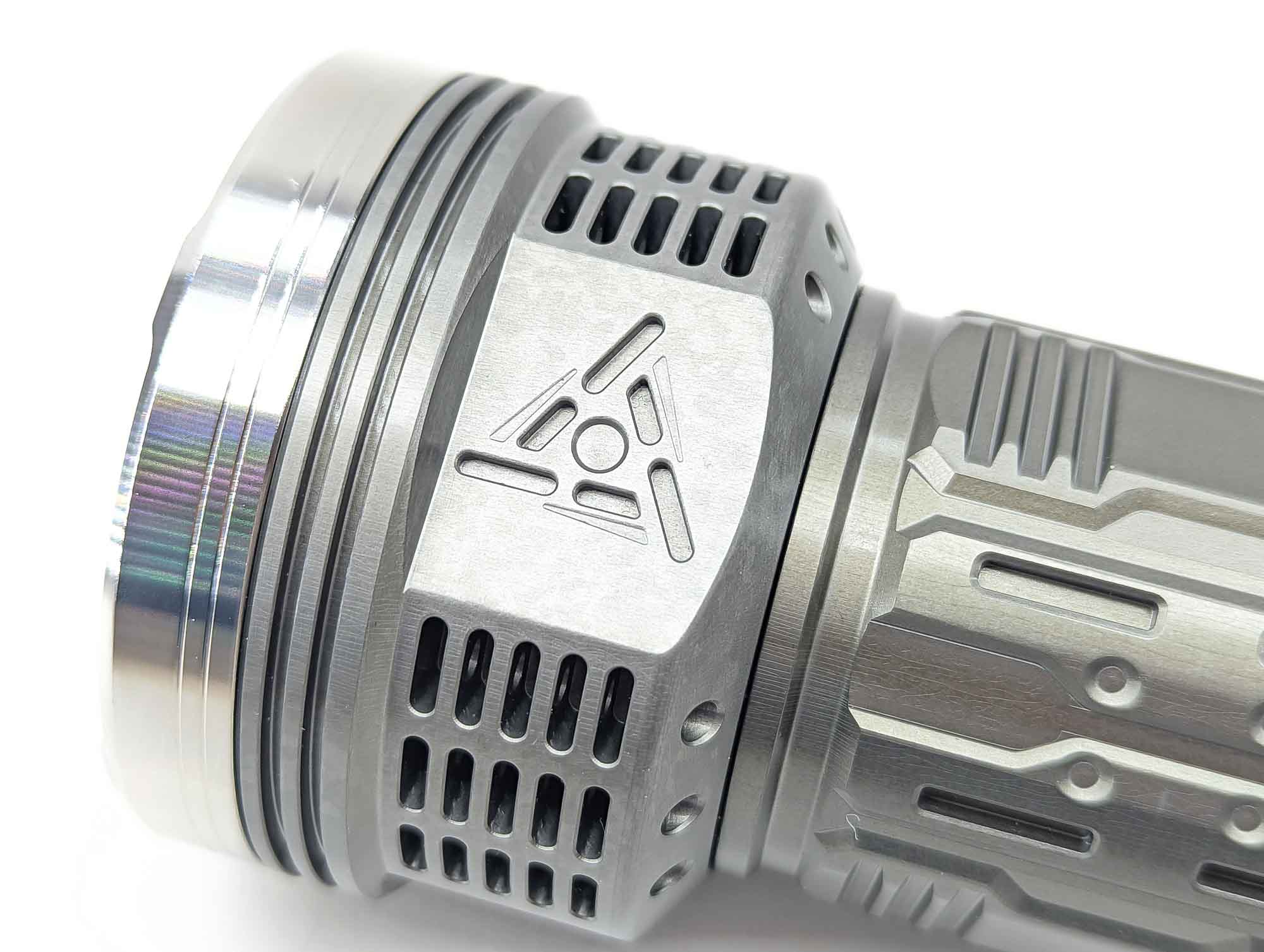
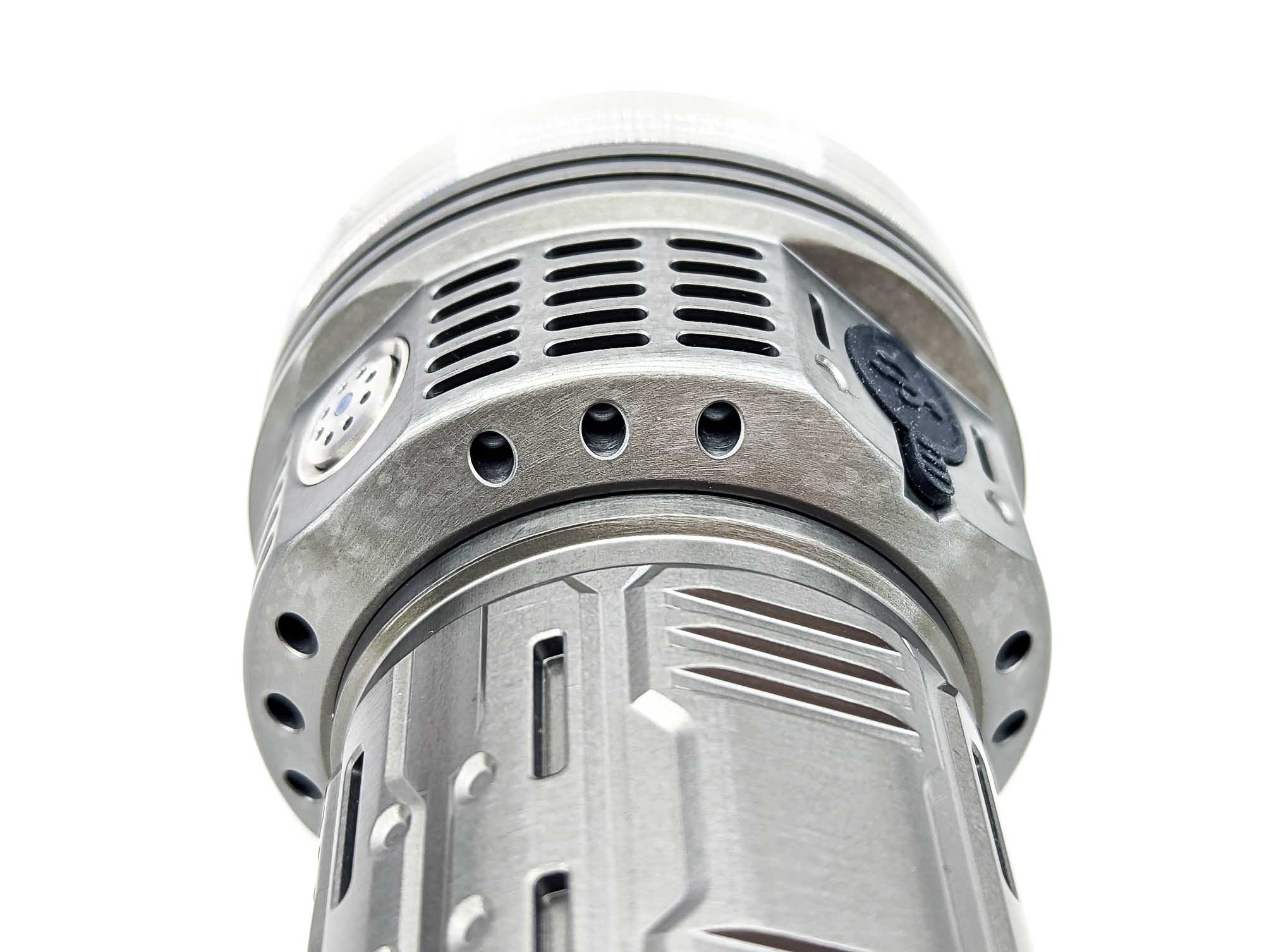
SFQ43 LEDs, Lens, Bezel, Beam, and Reflector
Aesthetics aside, one of the big differences between the older MF01S and the new MF01X is the switch from SST20 to SFQ43 LEDs. I can’t really say much about these LEDs as Astrolux doesn’t mention who makes them and pretty much all you get when Googling that name is the MF01X flashlight that we’re reviewing – so no help there. What I can say is that it’s a domeless emitter, high output, and claims to be 5700K.
We’ve got a whopping 18 of these SFQ43 LEDs at the business end of the MF01X. Those are surrounded by aux LEDs of various colors and then covered by a large TIR panel. There’s a piece of glass protecting that TIR. The whole arrangement is held in place by a stainless bezel ring that features some shallow ridges. That’s a good idea because you’ll be able to tell if you accidentally have your light on when you set it down in head-down position.
Like the MF01S before it, the MF01X has a neat array of aux LEDs at the front. You can use Anduril to set them low or high (of off, or flashing). But you can also fine-tune their brightness by removing the TIR and carefully adjusting the trim-pots on the aux PCB. Not only do they look pretty sweet, but they’re functional too – they indicate the battery voltage as follows:
- 3.9v-4.2v: Green, Pink, Blue
- 3.3v-3.9v: Pink, Blue
- 2.9v-3.3v: Red on
- <2.9v: All shut down with LVP
Opple Light Master readings on Level 1 of 7:
- CCT: 5330K
- CRI: 62.9 Ra
- DUV: +0.0114
Opple Light Master readings on Turbo:
- CCT: 5454K
- CRI: 63.5 Ra
- DUV: +0.0096
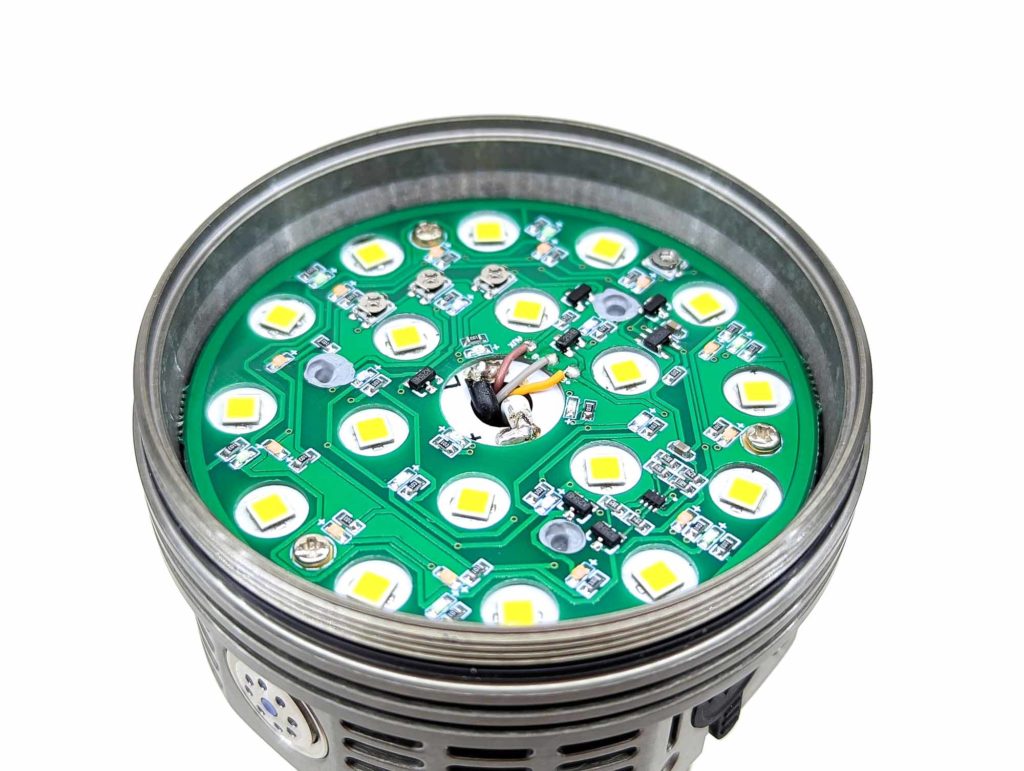
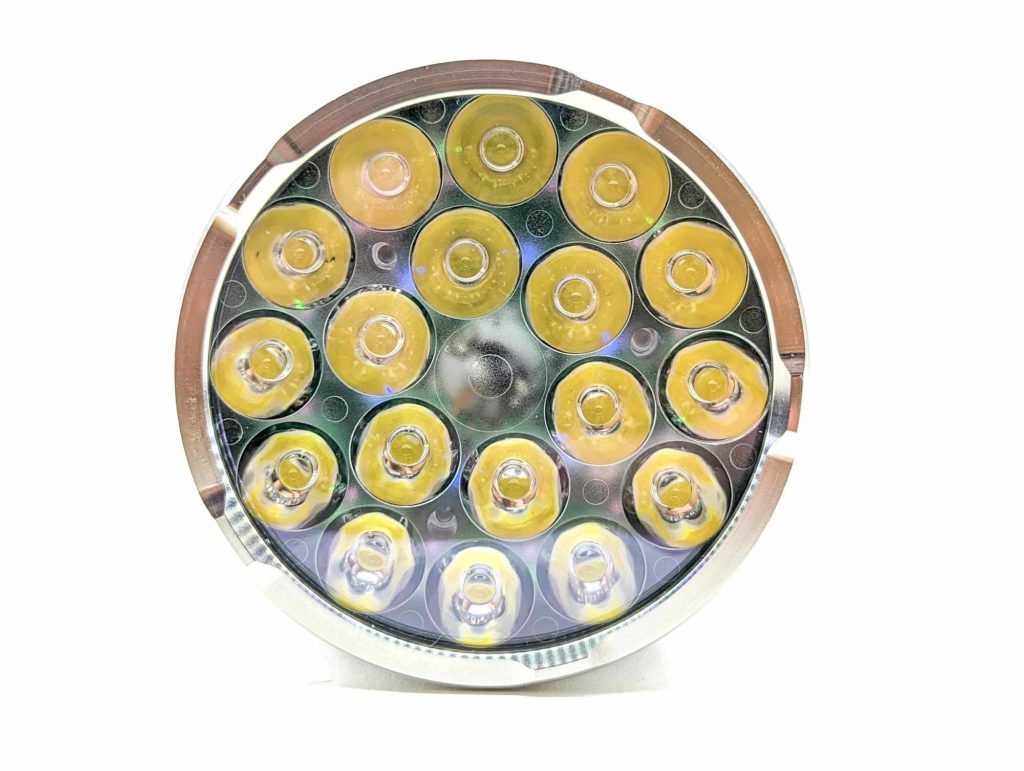
Dimensions and size comparison
Dimensions:
- Length: 129.6 mm / 5.1 inches
- Head diameter: 72.0 mm / 2.8 inches
- Body diameter: 53.8 mm / 2.1 inches
Weight:
- Without cells: 503 grams / 17.7 oz.
- With cells: 701 grams / 24.7 oz.
Brights flashlights size comparison with its competition
Many-emitter lights, left to right: FireFlies E12R, Astrolux MF01 Mini, Astrolux MF01X, Nitecore TM9K TAC
Compared to some very bright flashlights
Large multi-emitter lights, left to right: Fenix LR50R, Astrolux MF01X, Convoy 3X21A
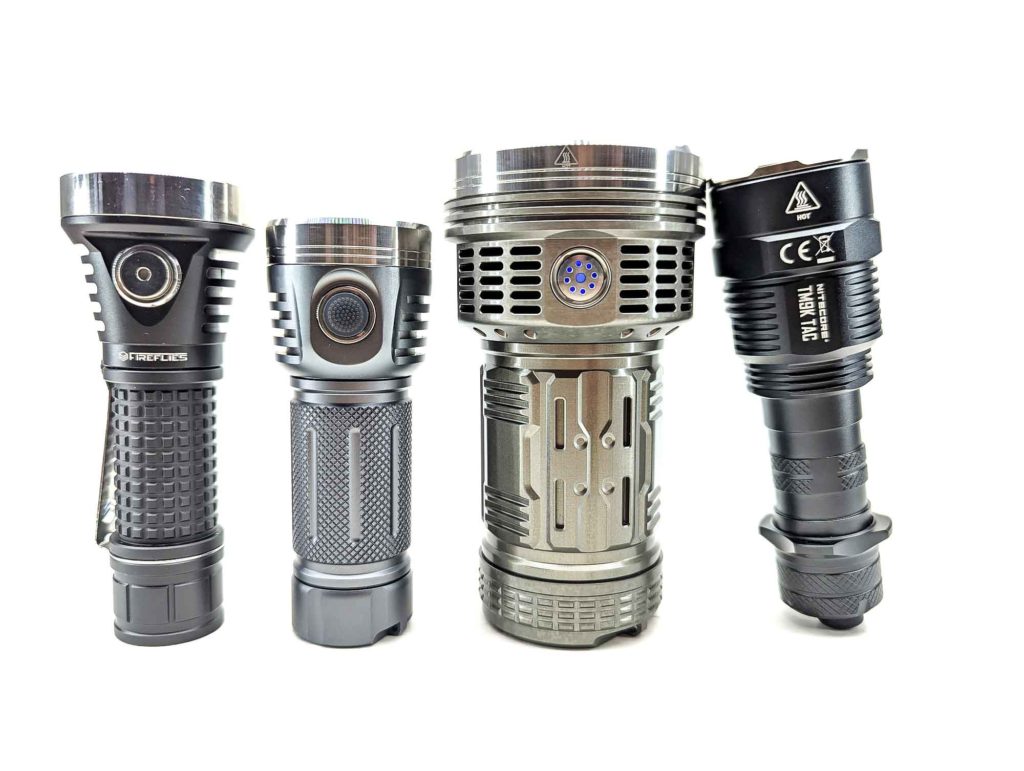
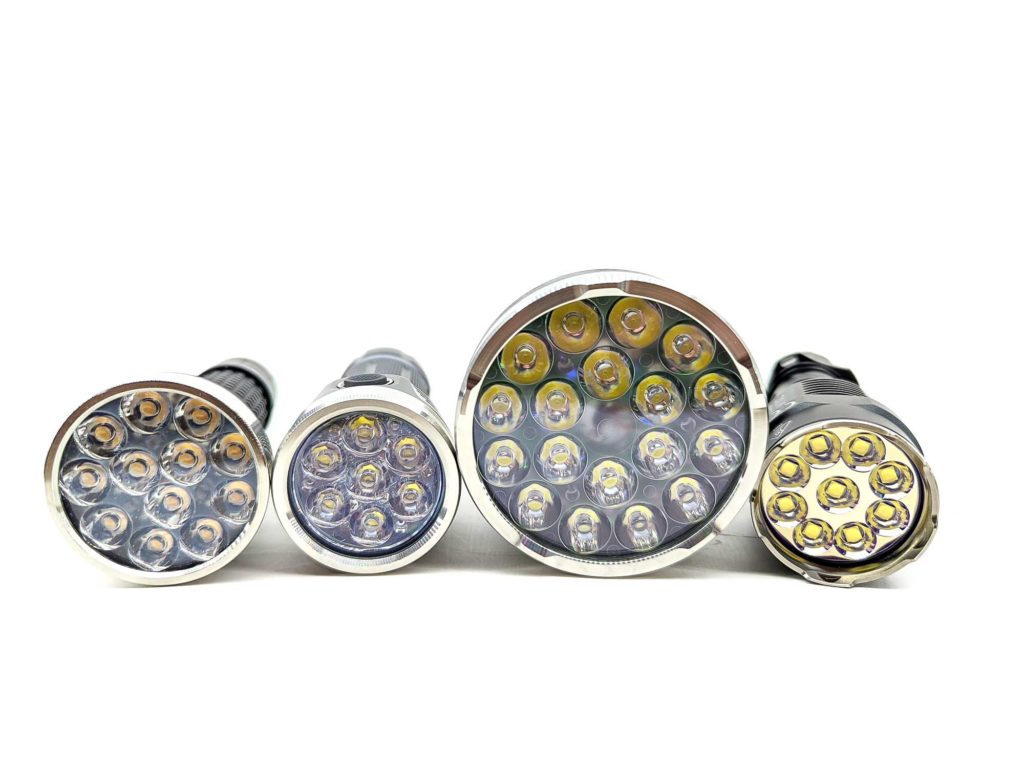
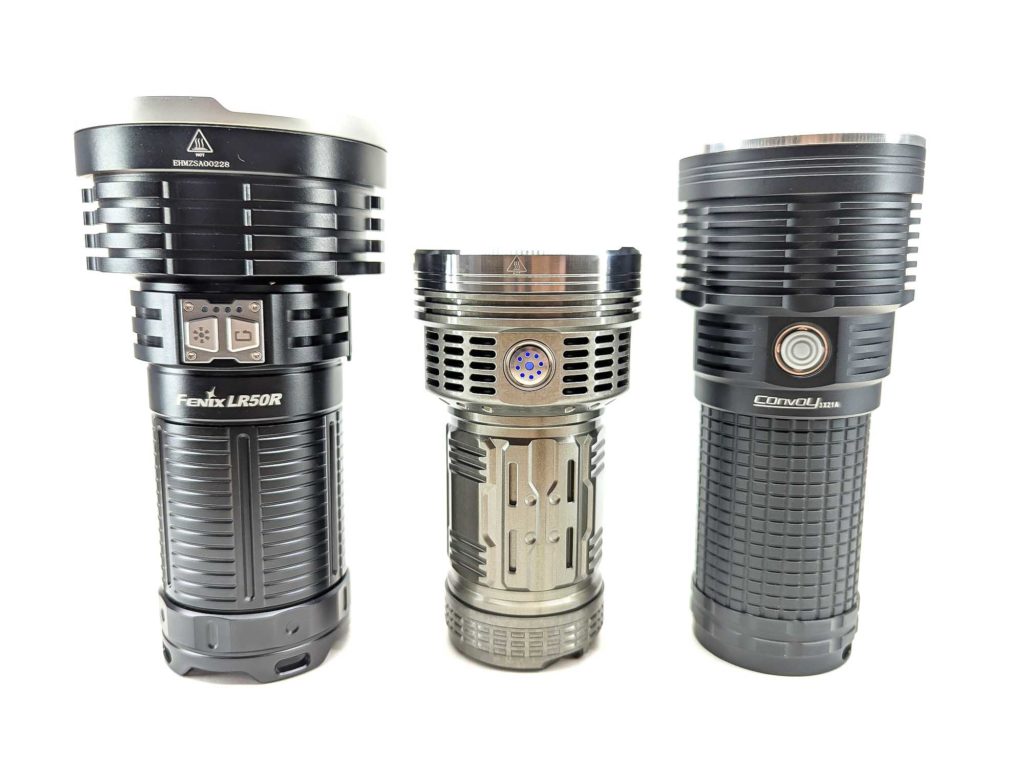
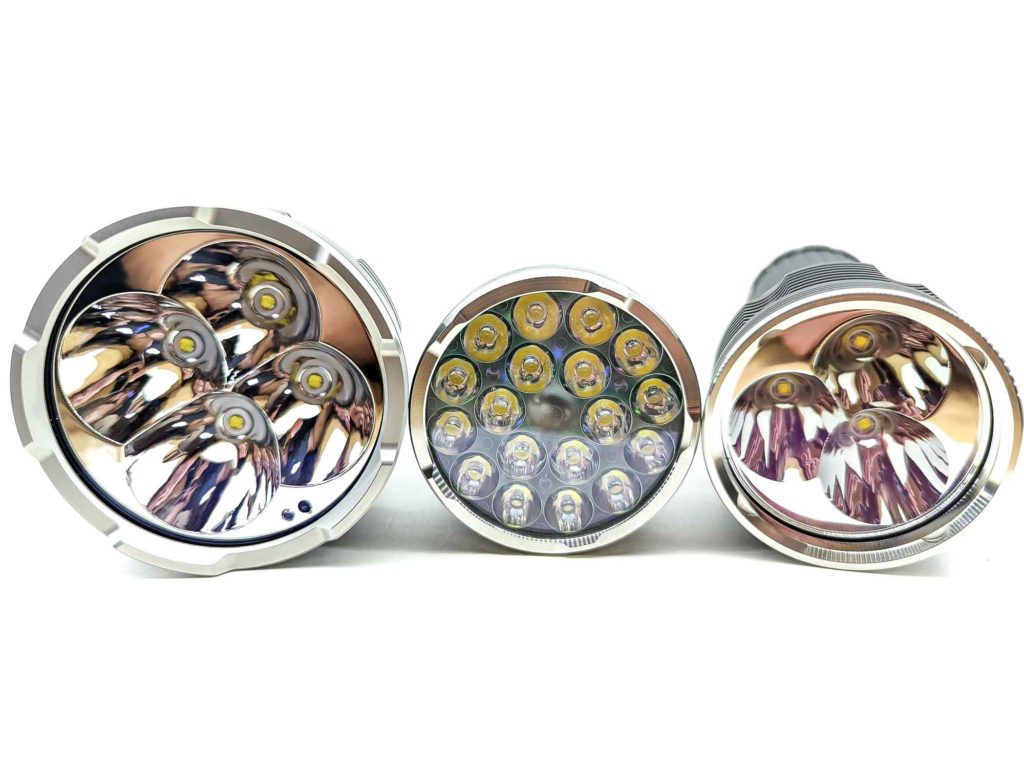
Driver & User Interface:
The Astrolux MF01X is running Anduril. Some people aren’t a big fan of Anduril, and that’s ok. I really appreciate its flexibility. But what I don’t appreciate? Launching an Anduril-based flashlight in 2022 without using Anduril 2. I say that not only because enthusiasts want the latest and greatest (they do!), but because Anduril 2 uses Simple UI by default. Simple UI is pretty straight-forward and helps make Anduril much more approachable for people that don’t usually like complex UIs. Unfortunately, though, the MF01X is still shipping with the original Anduril.
Check out the full Anduril UI manual here.
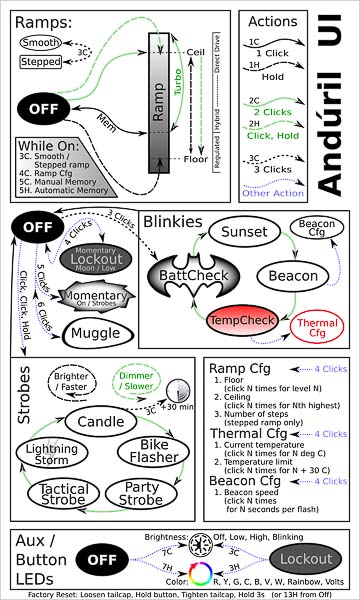
From OFF:
- Single-click: ON
- Double click: High
- 3 clicks: Battery check
- 4 clicks: Lock Out
- 5 clicks: Momentary On
- 6 clicks: Muggle mode
- 7 clicks: Aux configuration mode
Enter Special/Fun modes from OFF:
- 2 clicks + hold: Strobe modes (Click, Click, Click and hold)
- 4 clicks: Lock Out mode (momentary on: dim)
- 5 clicks: momentary mode (Bright) ( you can only deactivate by breaking electrical contact between the batteries and the driver by unscrewing the body from the head.
- 6 clicks: Muggle mode
From ON:
- Single-click: Off
- Double click: Turbo
- 3 clicks: change ramping mode. Instead of a smooth increase, it has 6 little steps between Low and Max.
- 4 clicks: ramping configuration mode (Problematic if you make some changes here by accident)
- Press and hold: brightness ramps up.. release and press and hold again to ramp down.
SPECIAL AND FUN MODES:
Read the full manual on how to access and customize these modes. Also, see the firmware picture.
- Blinky Utility mode:
- Battery check
- Sunset Mode
- Beacon mode
- Temperature check
- Strobe / Mood modes:
- Candle
- Bike flasher
- Party strobe
- Tactical Strobe
- Lightning mode
- Lockout mode (can’t use the light) (activate by 4 clicks)
- Momentary mode (signaling/morse coding)
- Muggle mode: (safer for children)
- Configuration mode
- Ramp config mode
LOCK OUT FEATURE:
- From OFF: 4 clicks. To deactivate click another 4 times.
Batteries & Charging
The original MF01S took four 18650 batteries, which was the go-to size back when it debuted. Fast forward a couple years, and now 21700 are all the rage. Astrolux jumped on that wagon and made the MF01X accept three 21700 batteries. I’ve used both Samsung 50G and Molicel P42A batteries in testing. Astrolux’s published specs say they were made with Samsung 40T’s. Due to the high-current nature of this light, you should use unprotected cells, likely flat-tops. If you have short button-top cells, those should work too.
Note: please be careful with battery orientation, especially with unprotected cells. Learn from my example. I got distracted while loading cells in for a test (my 2 year old needed attention) and accidentally reversed a cell. Bad news! In the blink of an eye, it destroyed that reversed cell, melted its wrapper, caused it to spew nasty fumes in my face, and damaged that set of tail springs. Thankfully the rest of the light survived. Please don’t do this. Be careful!
The Astrolux MF01X features on-board USB-C charging. The port is covered with a pretty sturdy plug. USB-PD (Power Delivery, USB-C to USB-C) is supported. I connected the Astrolux MF01X up to my 33W USB-PD charger and observed 1.50 amps at 11.93 volts for a 17.86 watt charge rate. It charged the empty Samsung 50G batteries to 4.18 volts in 4 hours and 8 minutes. Overall, that seems pretty good for charging 3 high capacity 21700 batteries. Nice!
But wait, there’s more! As is becoming a bit more common, the USB-C port also functions as a powerbank. The easy spec is that it puts out an impressive 18 watts. Of course, charging isn’t a one-size-fits-all solution, there are a lot of different charging protocols. Astrolux claims: PD3.0/PD2.0/QC3.0/QC2.0/FCP/PE2.0/PE1.1/SFCP. Based on the Protocol Detection feature of my Fnirsi FNB38, that looks about right. I tried charging my Pixel 6 with the MF01X. It jumped right into PD (Power Delivery) mode and put out 1.93 amps at 8.84 volts for 17.07 watts.
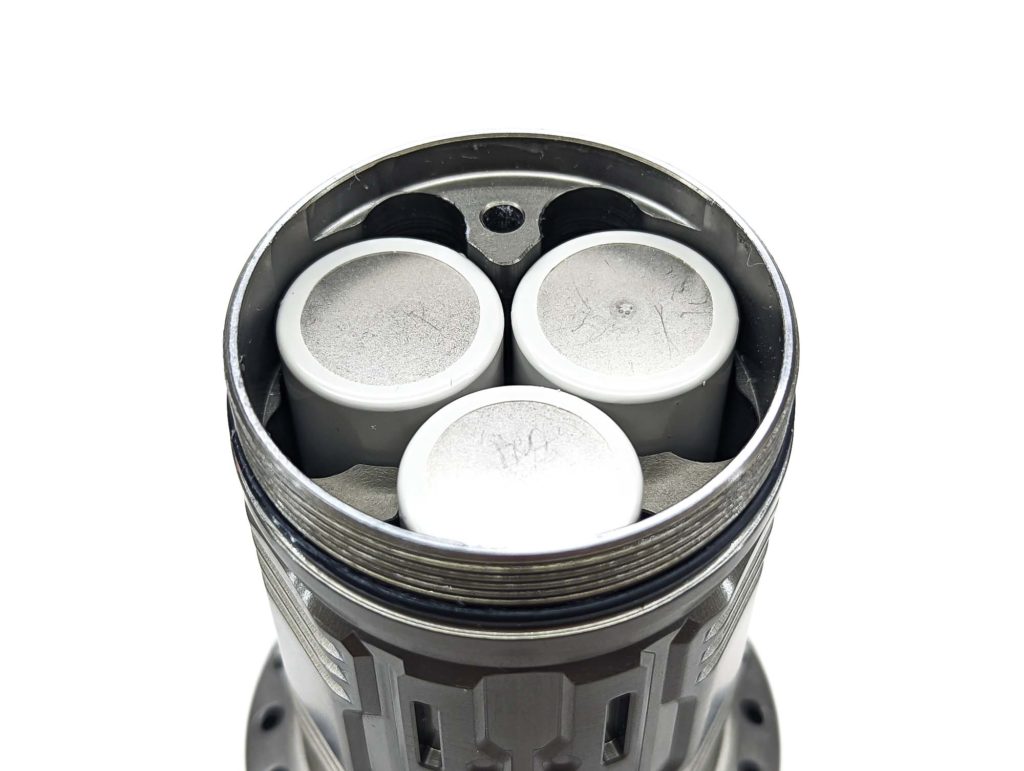
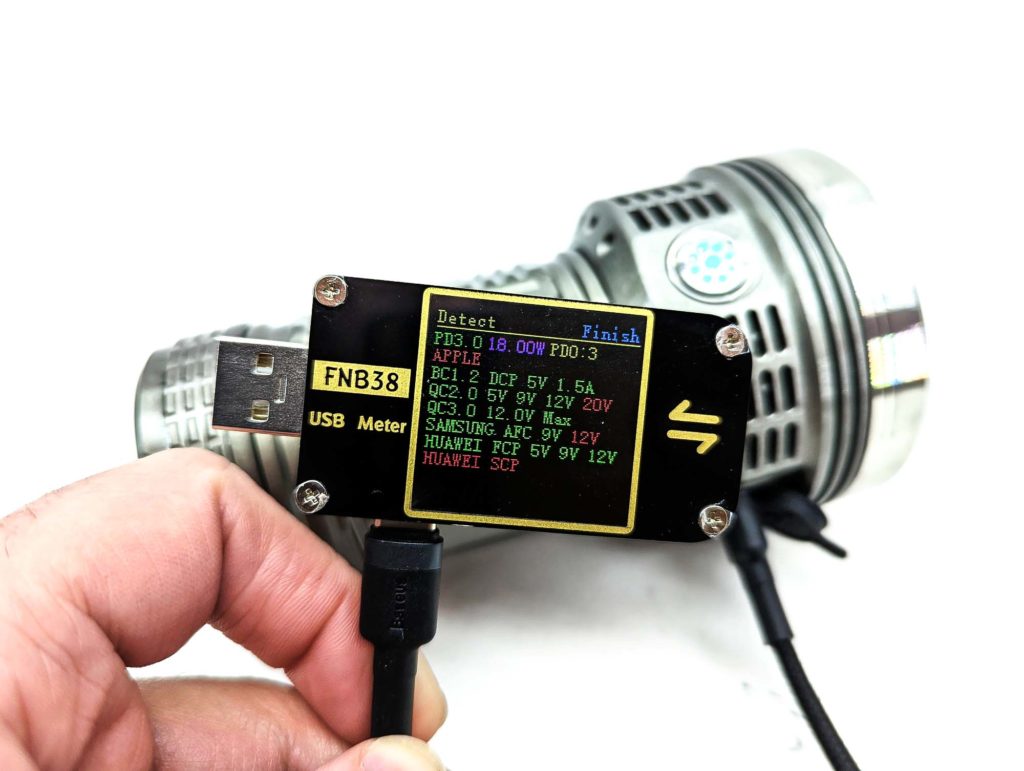
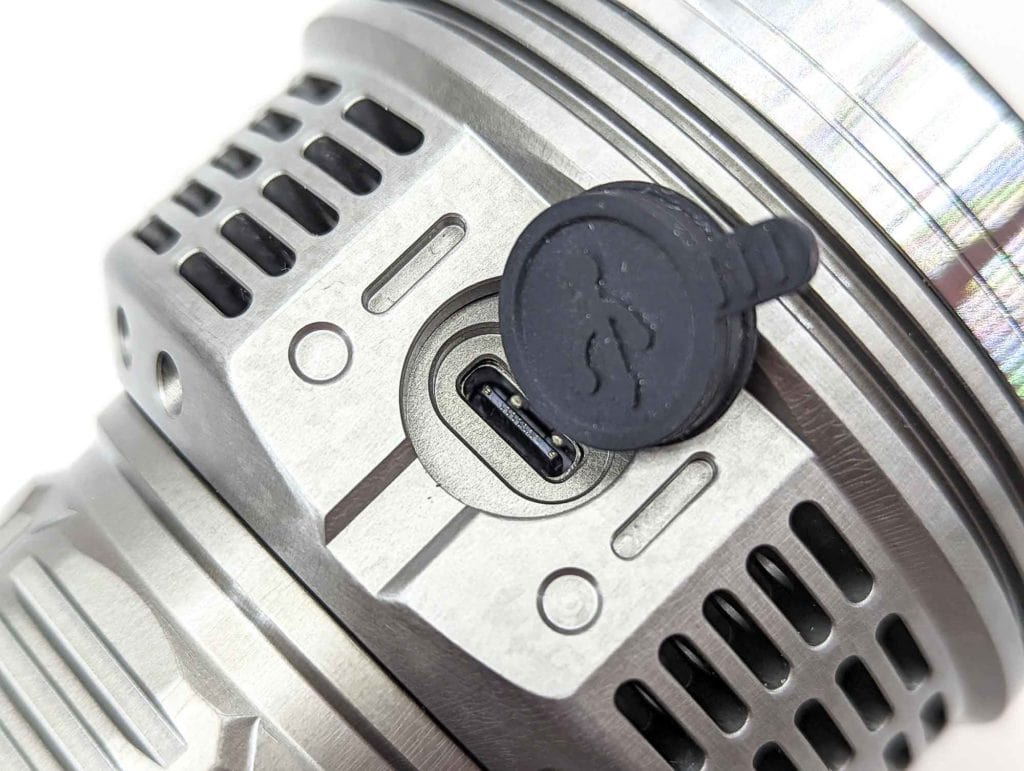
Performance test
For current measurements, an ANENG AN8008 multimeter and UNI-T UT210E clamp meter were used. Lux was measured by a UNI-T UT383 BT at 5 meters. Lumens were measured in a homemade lumen tube using a TSL2591 sensor, calibrated with a Maukka calibration light. The temperature was monitored with a MLX90614 IR temperature sensor. Three Samsung 50G batteries were used for most of the tests, some were completed with a set of Molicel P42A batteries as noted.
Lumen measurements (for each mode)
Amp measurements were performed with a single Molicel P42A, which may be a limiting factor for the higher mode amp readings.
| Mode | Amps at start | turn on | 30 sec | 10 minutes |
|---|---|---|---|---|
| Level 1 of 7 | 97 mA | 40 | 40 | – |
| Level 2 of 7 | 303 mA | 139 | 138 | – |
| Level 3 of 7 | 760 mA | 351 | 348 | – |
| Level 4 of 7 | 1.2 A | 571 | 567 | – |
| Level 5 of 7 | 4.4 A | 2,216 | 2,212 | 2,172 |
| Level 6 of 7 | 10.9 A | 5,655 | 5,435 | 1,256 |
| Level 7 of 7 | 20+ A | 10,611 | 9,703 | 1,246 |
| Turbo | 38+ A | 13,081 lm | 14,269 lm | 1,264 lm |
Parasitic drain:
- 187 µA with Aux LEDs on Low
- 336 µA with Aux LEDs on High
Runtime graph
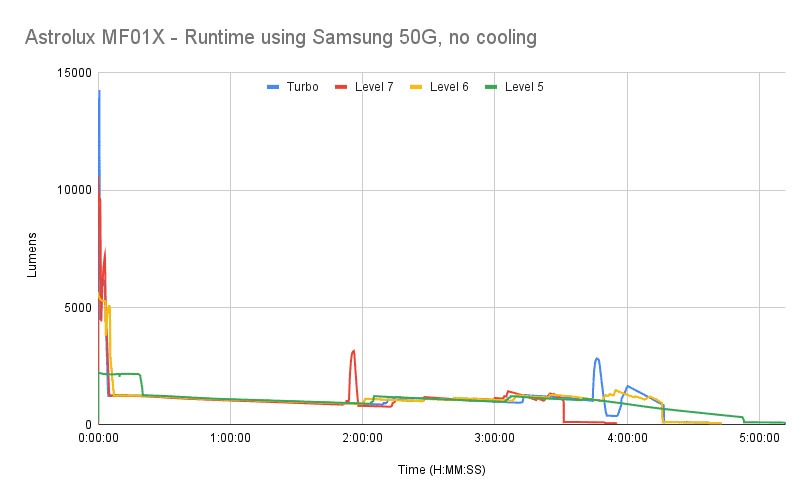
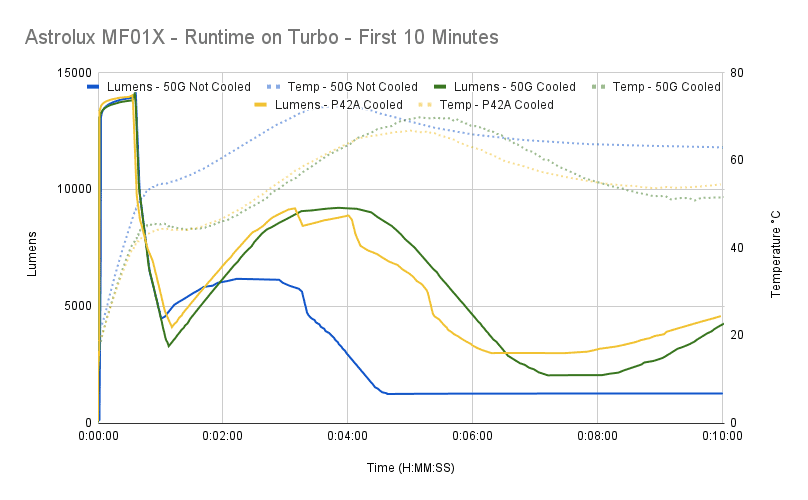


The first runtime test I did was Turbo mode using freshly charged Samsung 50G cells. At turn on, the light hit 13,081 lumens. It actually got a bit brighter over the first 30 seconds, topping out at 14,269 lumens before thermal regulation kicked in and output dropped to 1,264 lumens. It averaged around 1,000 lumens for the rest of the run. With output being so far below spec, I thought maybe I didn’t get it into Turbo properly, or perhaps the batteries weren’t fully charged. So I charged up the cells and tried again – and got the same results.
For the sake of trying other things, I pointed a fan towards the light and made another Turbo run using 50G cells. The initial output was nearly identical. It took a bit for output to stabilize, but it settled at around 5,000 lumens instead of 1,000. Much better – air movement really helps.
Thinking that maybe the Samsung 50G cells were the limiting factor (Astrolux notes that their specs were the results of testing with Samsung 40T cells), I installed freshly charged Molicel P42A cells and kicked it into turbo. I once again got nearly the same initial output numbers as the first run. So, I disassembled the battery tube and scrubbed the mating surfaces with rubbing alcohol and tried again… still the same results.
In Level 7 of 7, it started out at 10,611 lumens. Output sagged a little bit, then by 3 minutes, thermal regulation had started setting in and took the output all the way down to 1,243 lumens where it stayed for most of the rest of the run. Output dropped hard at 3 hours and 31 minutes.
In Level 6 of 7, it started out at 5,655 lumens and stayed close to there until thermal regulation really started kicking in around 3 minutes. Once again, output got down to 1,242 lumens until output dropped hard at 4 hours and 16 minutes.
Lastly, in Level 5 of 7, it started out at 2,216 lumens and hung there for 19 minutes before dropping down to its ~1200 lumen range. Output dropped hard at 4 hours and 52 minutes.
Throw numbers:
Throw was measured at 10 meters with fresh batteries
| Mode | Specs | Candela measured | Meters | Yards |
|---|---|---|---|---|
| Turbo | 190,000 cd | 88,000 cd | 593 m | 648 yd |
Beamshots
The farm shed in these beamshots is 100 meters (109 yards) away. Pictures were taken with my Pixel 3 using ƒ/1.8, ⅕ second exposure time, ISO200, and 5000K white balance
- Astrolux MF01X
- Convoy 3x21A
- Fenix LR50R



Disclaimer: This flashlight was sent to me for review at no cost by Banggood. I have not been paid to review, nor have I been holding back on problems or defects.
Final Verdict
Pros
- Plenty bright
- High-tech styling
- USB-C charging
- Powerbank function
Cons
- Tests way under spec
- Terrible switch
- Tailcap is difficult to remove
- Old version of Anduril
Explanation on star ratings:
1: Avoid: my phone flashlight would be a better choice – 2: Poor: significant defect or issues; almost unusable – 3: Average: some defects or issues; but still usable 4: Good: recommended (minor issues) – 5: Great: highly recommended

3 stars: ★★★
I feel really torn about the Astrolux MF01X. It looks so darn interesting with its space-age style. It puts out a ton of light. It has a lot of features like USB-C charging and powerbank capability. Oh, and there’s that new-fangled mystery LED, the SFQ43.
Unfortunately, no matter what I tried, I couldn’t get anywhere near the claimed 21,000 lumens and 190,000 cd. The switch was absolutely infuriating to use until I finally removed the metal cover. Speaking of removing, I practically needed a pipe wrench to remove the tailcap. And shipping with Anduril 1 when Anduril 2 is (in my humble opinion) much better and has been out for so long? What a missed opportunity.
I do like the Astrolux MF01X. It looks really badass. And even with missing spec, it’s still a crazy bright lumen-monster. I just wish there was a bit more attention to detail. A MF01X V2, perhaps?
Astrolux MF01X For Sale
1lumen selects and reviews products personally. We may earn affiliate commissions through our links, which help support our testing.